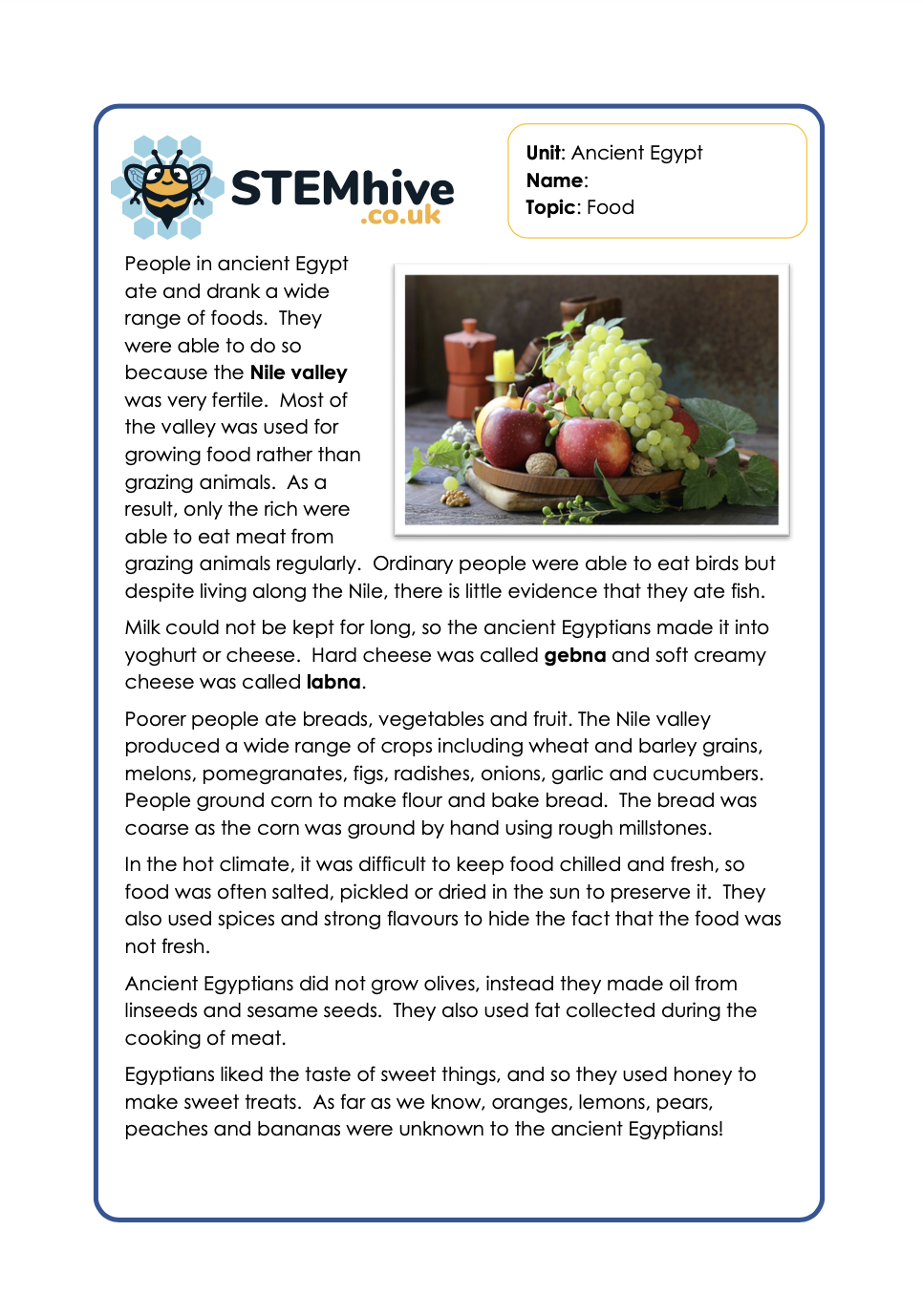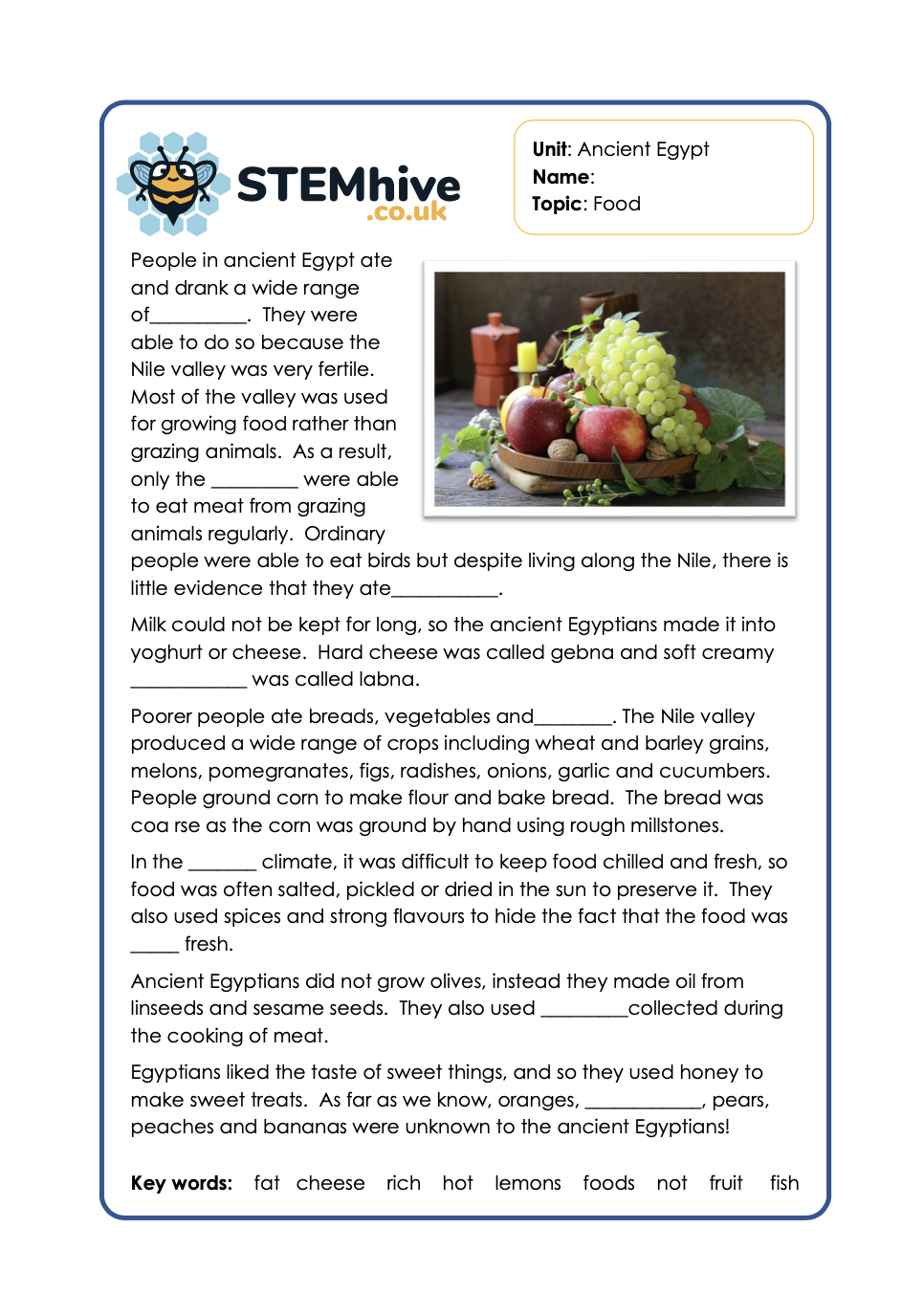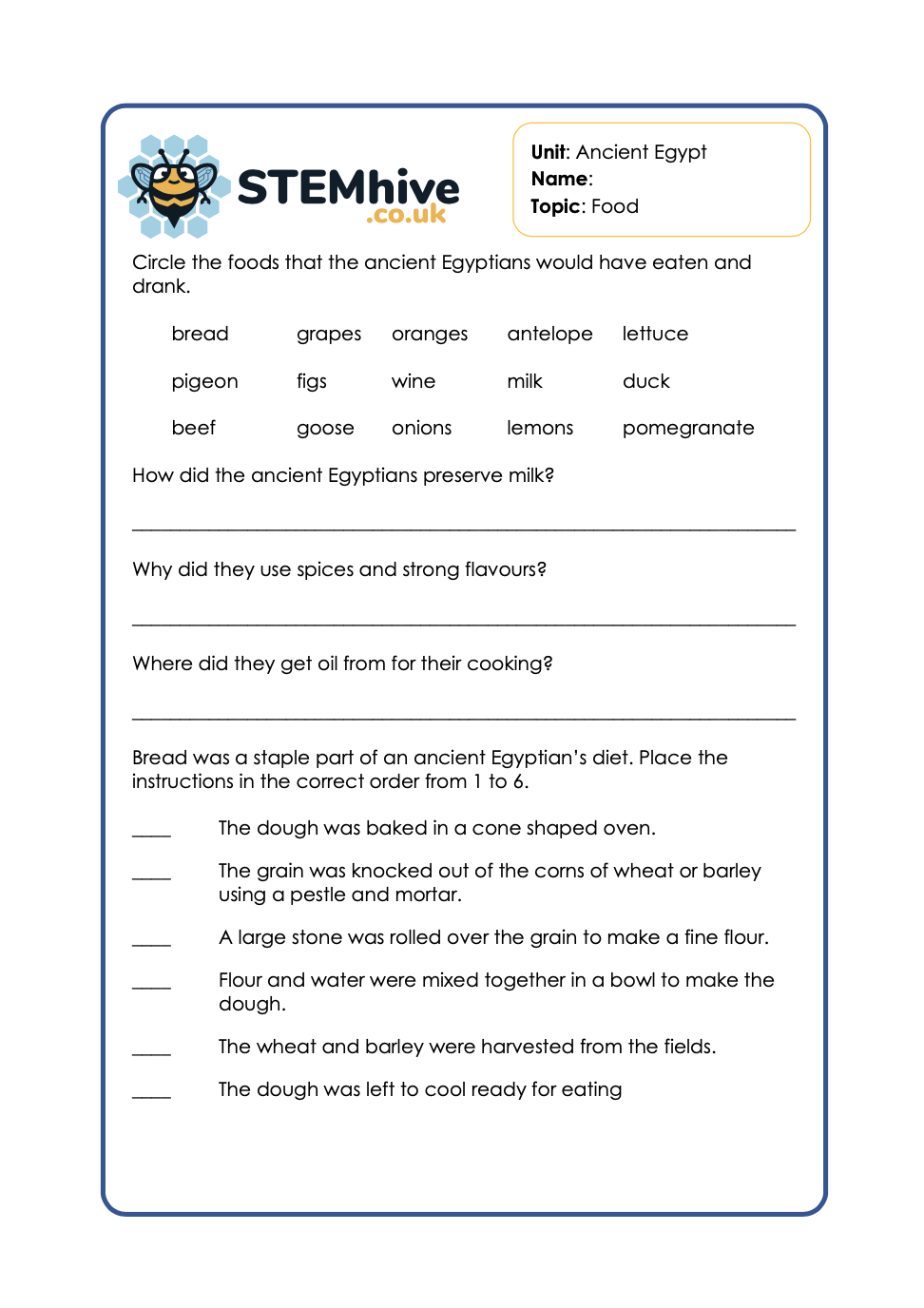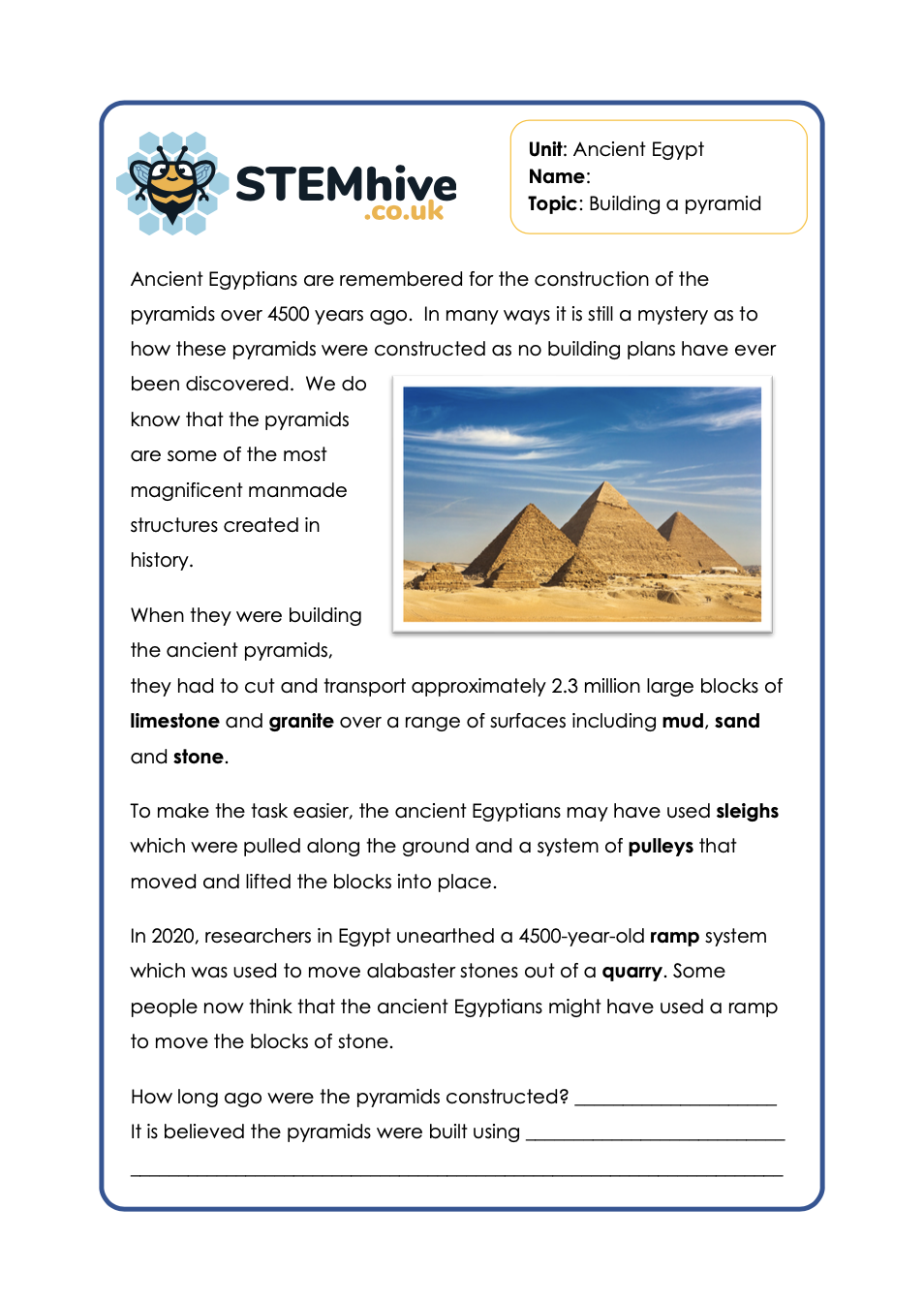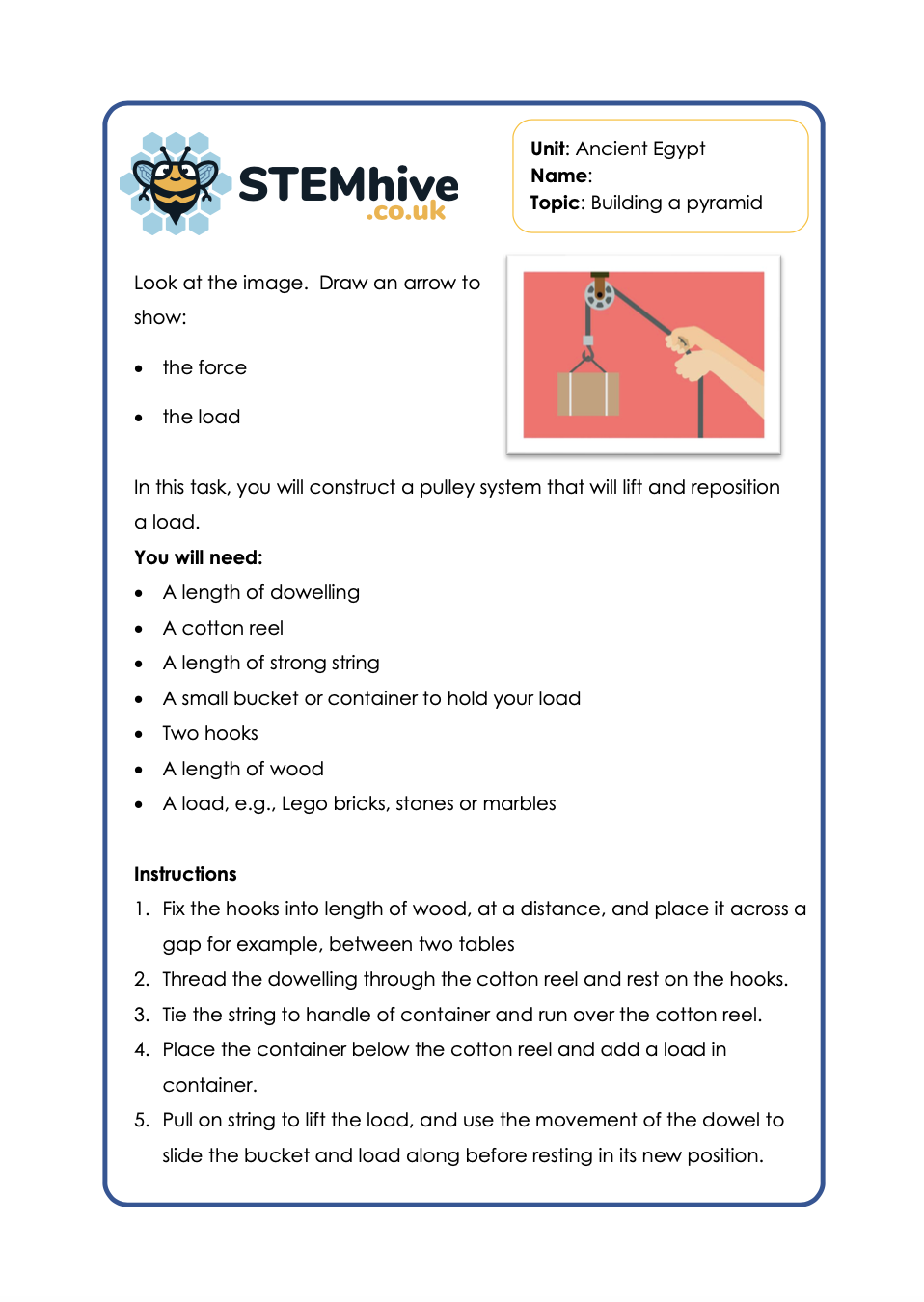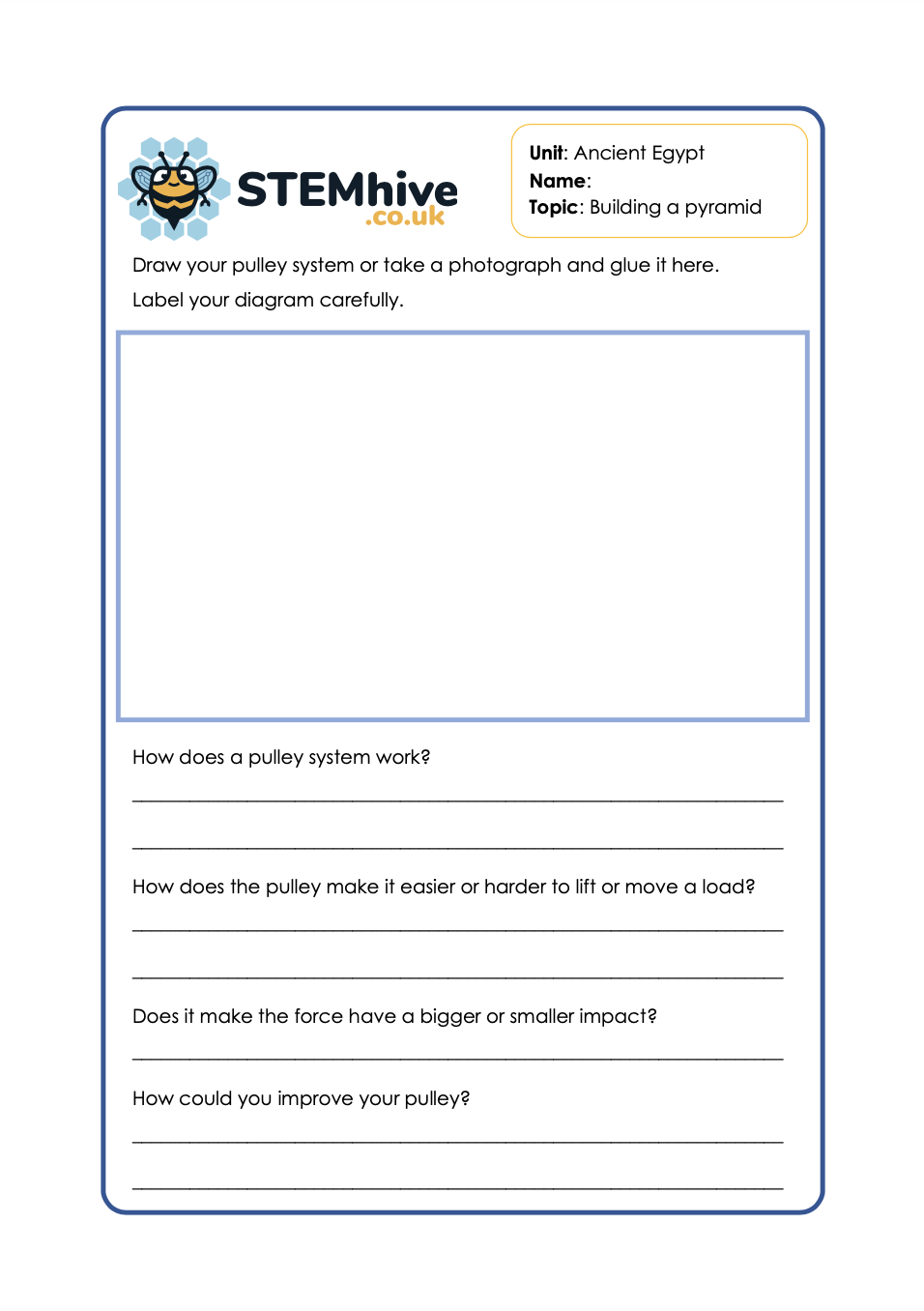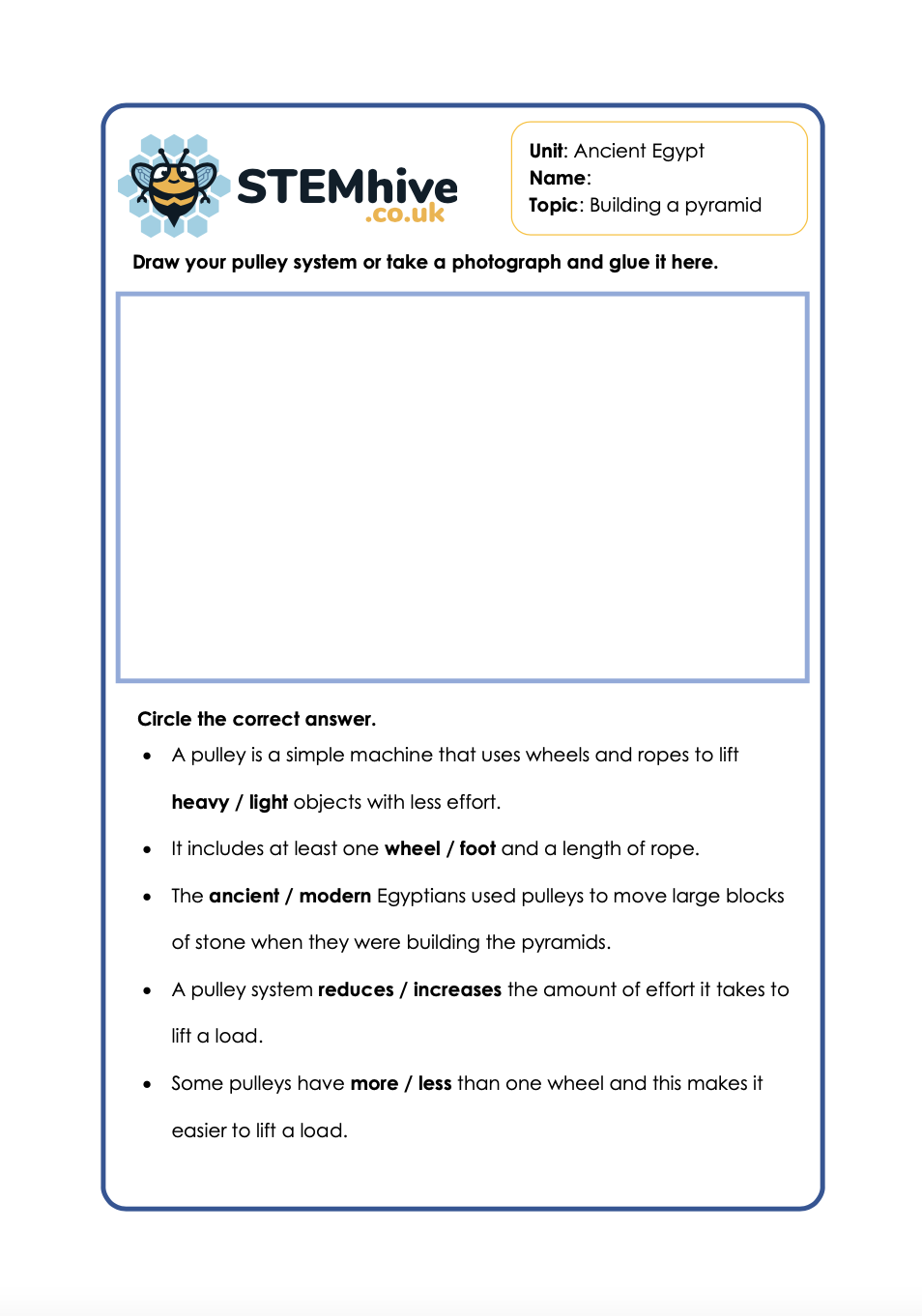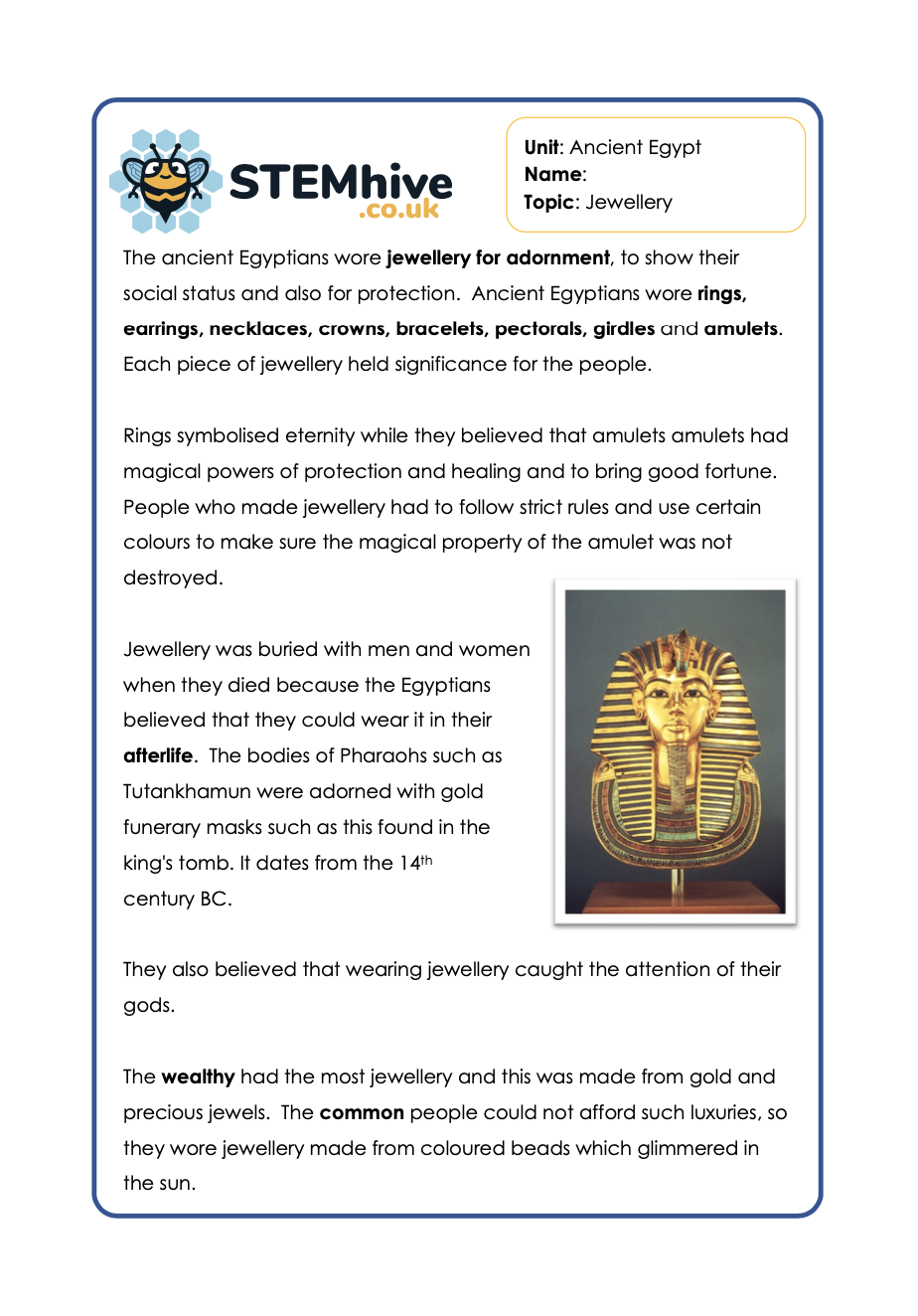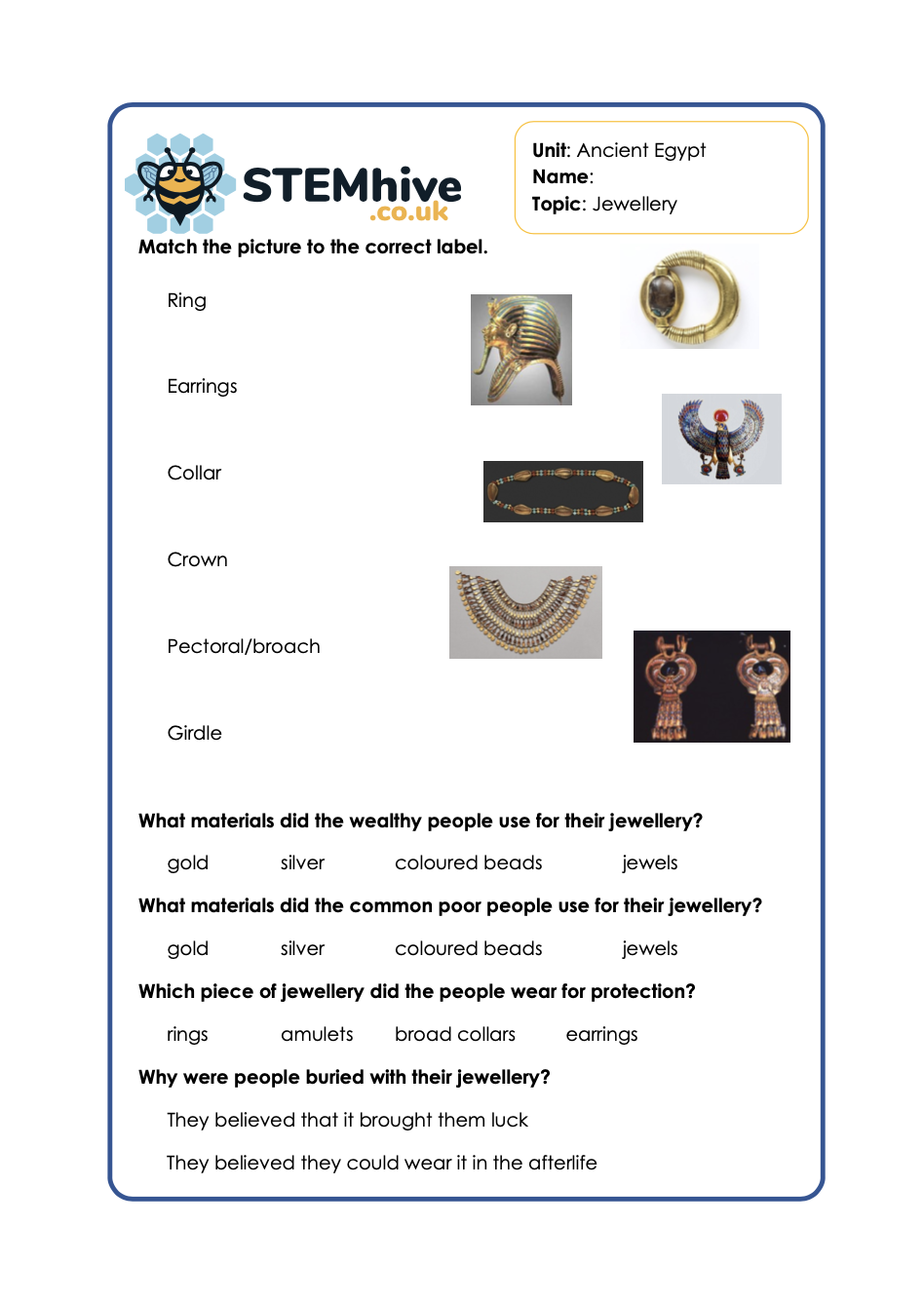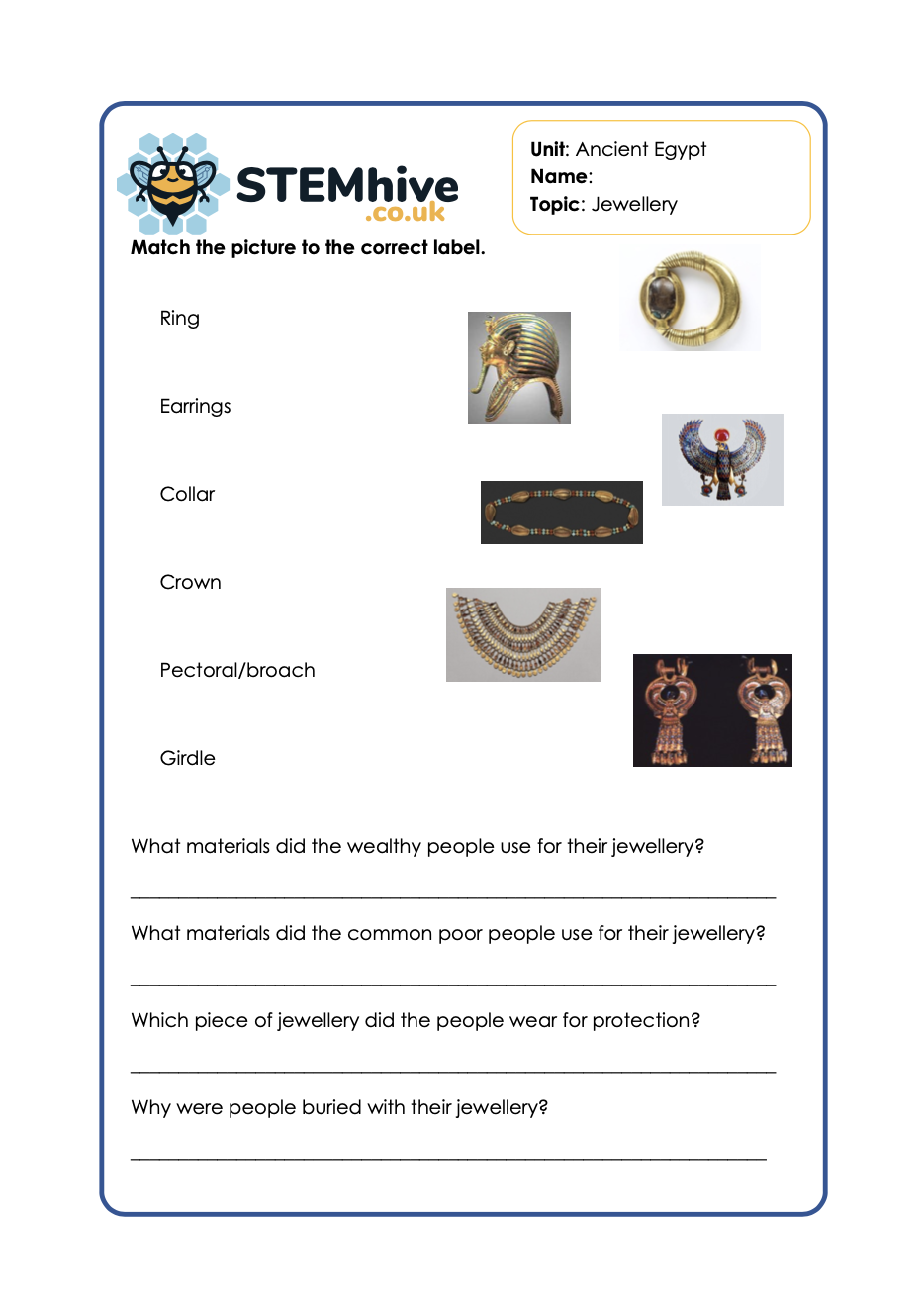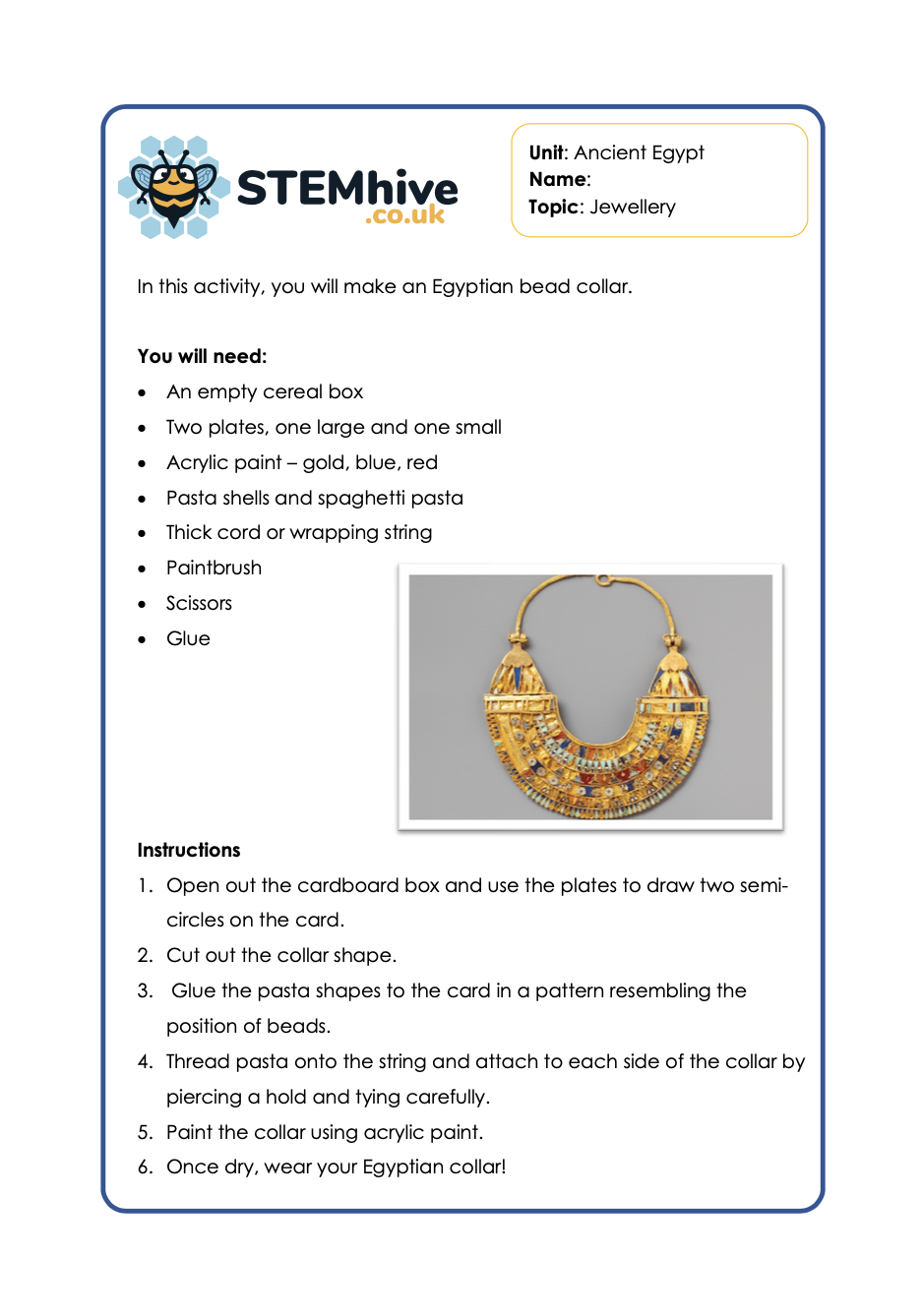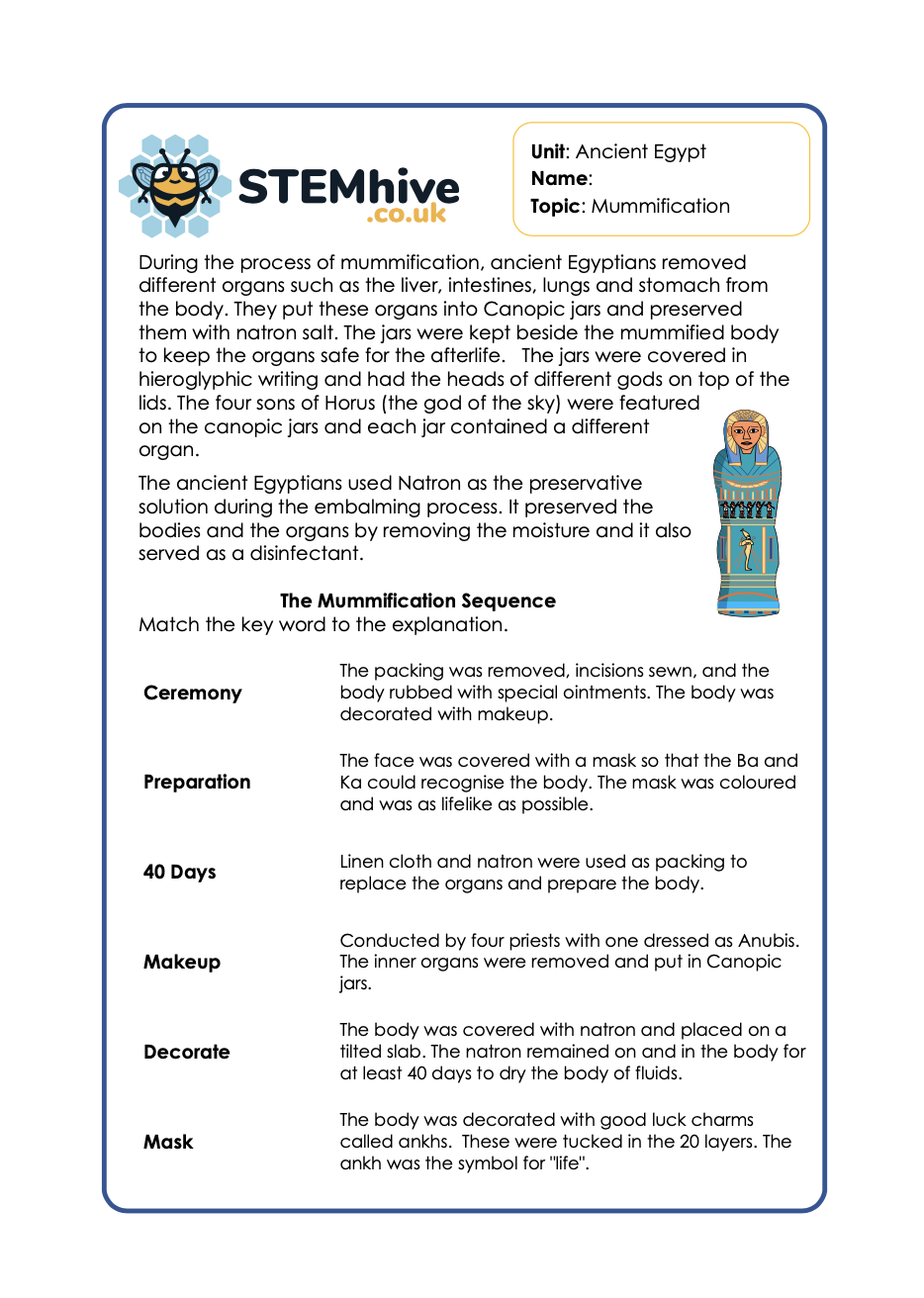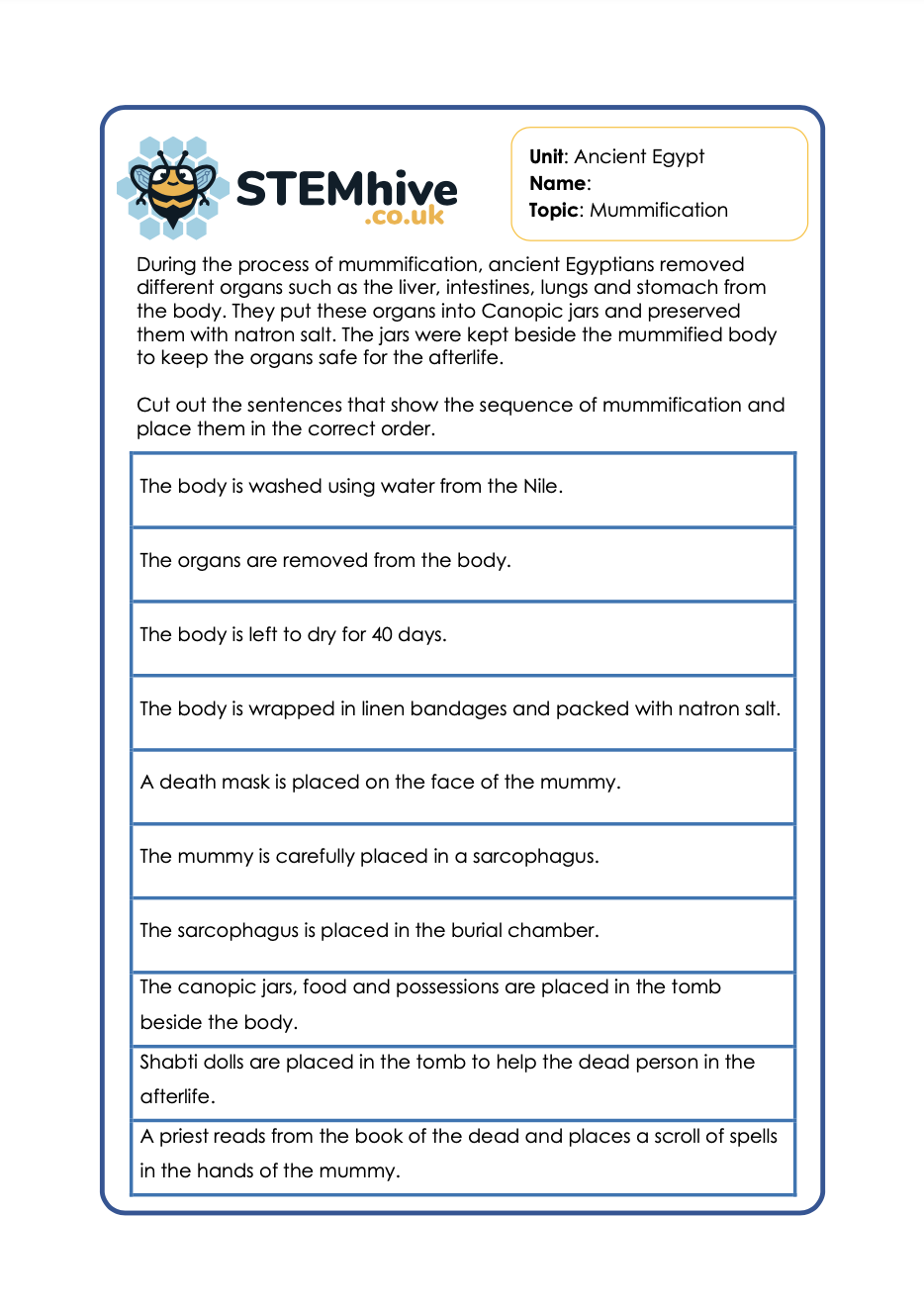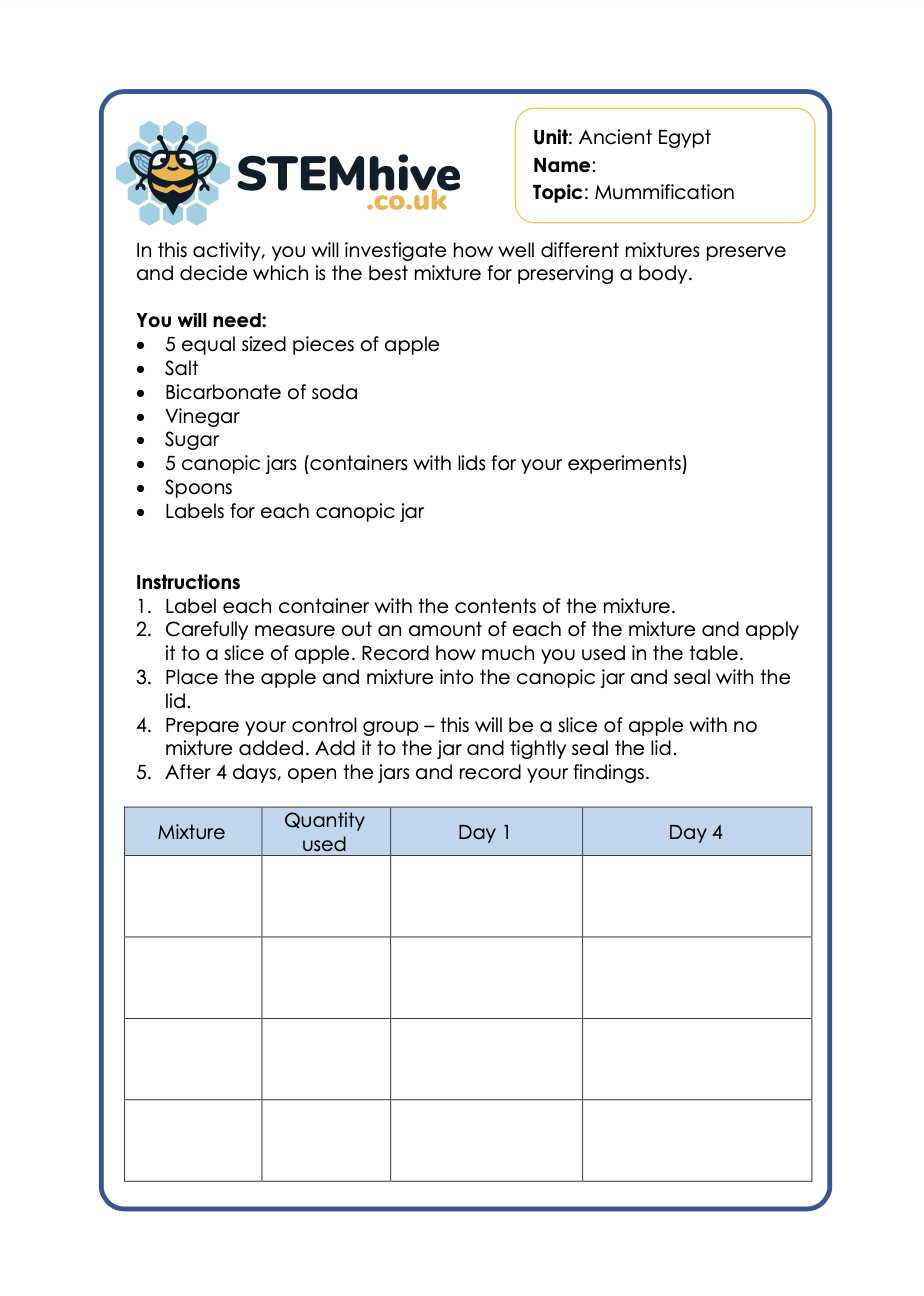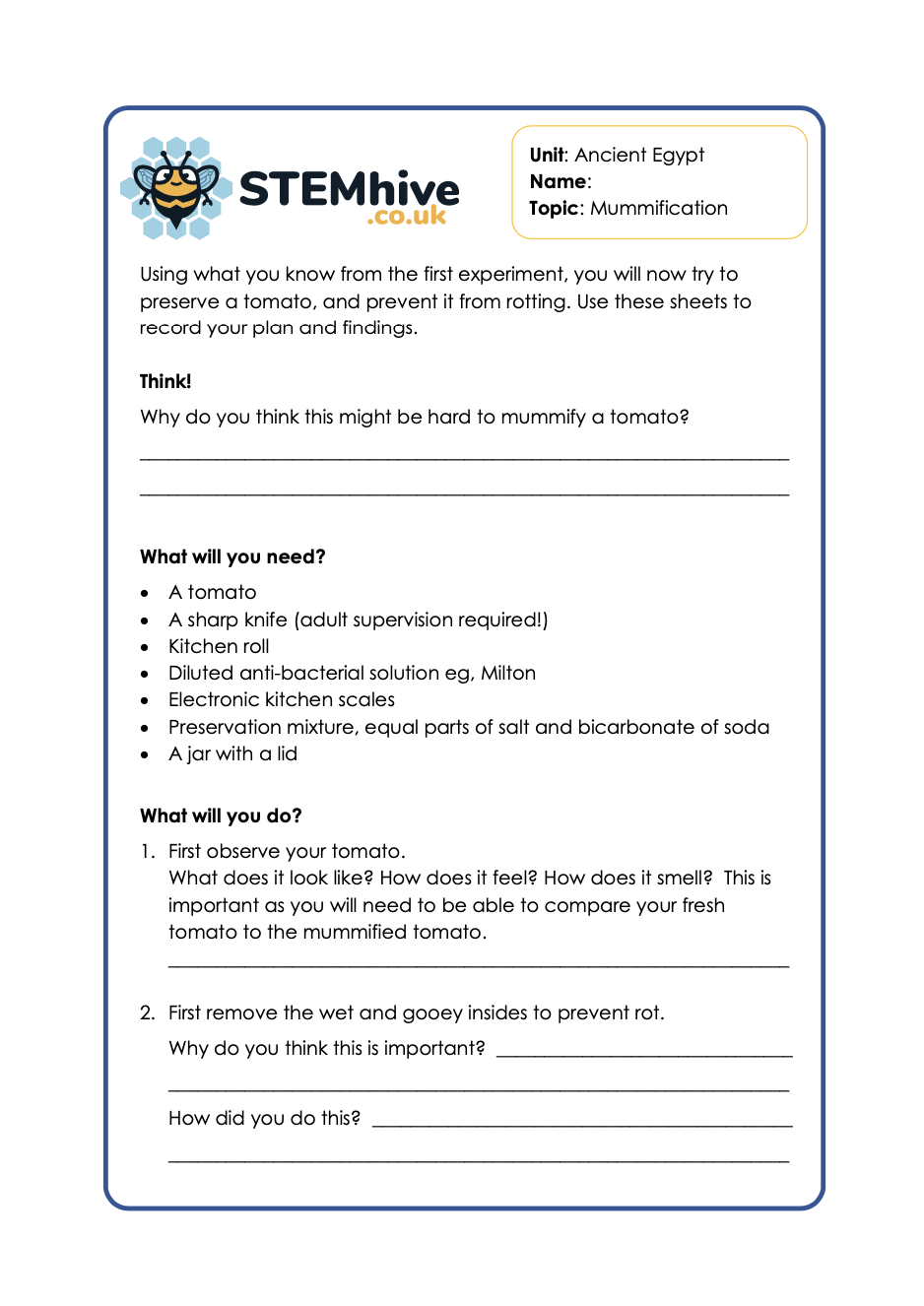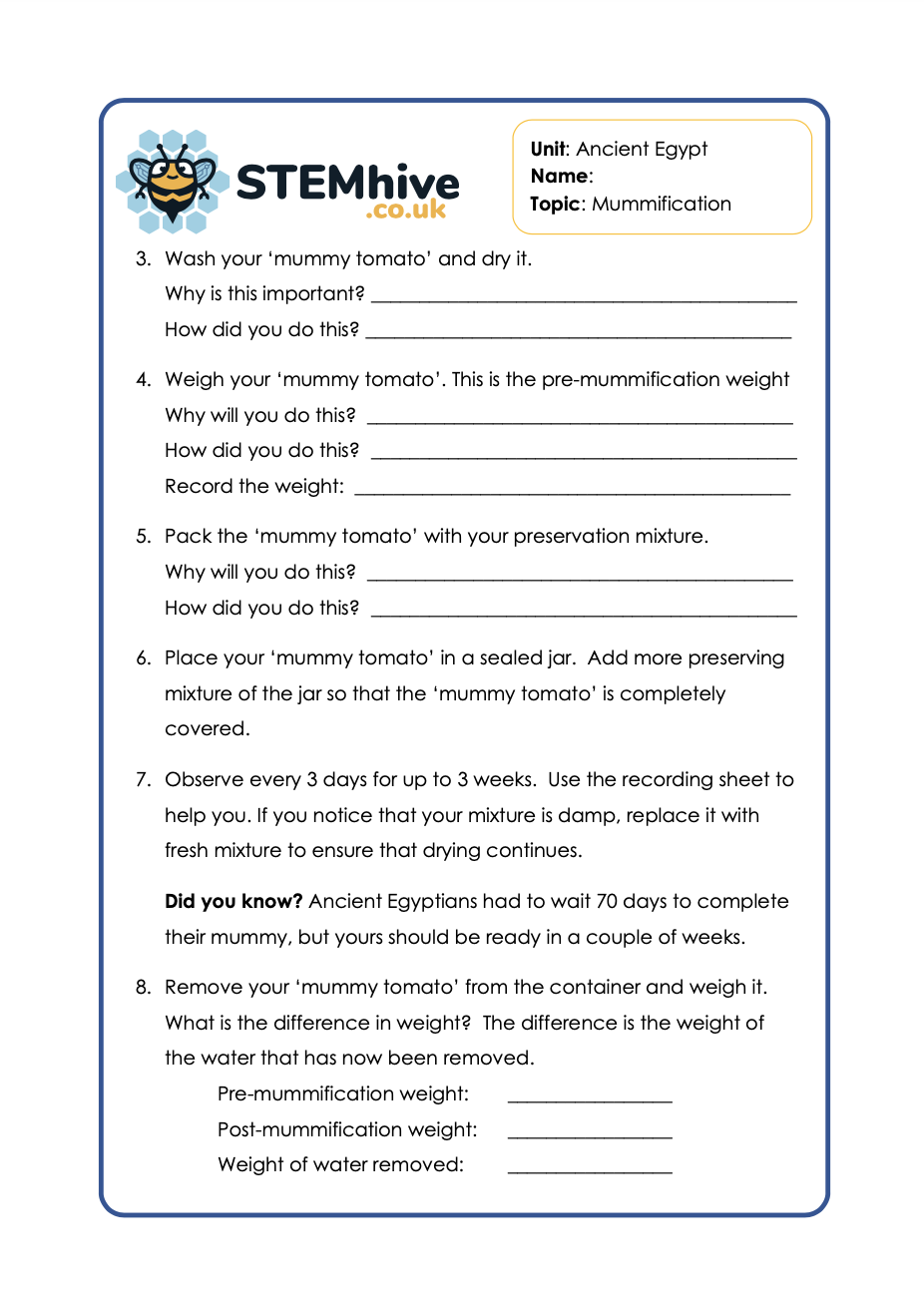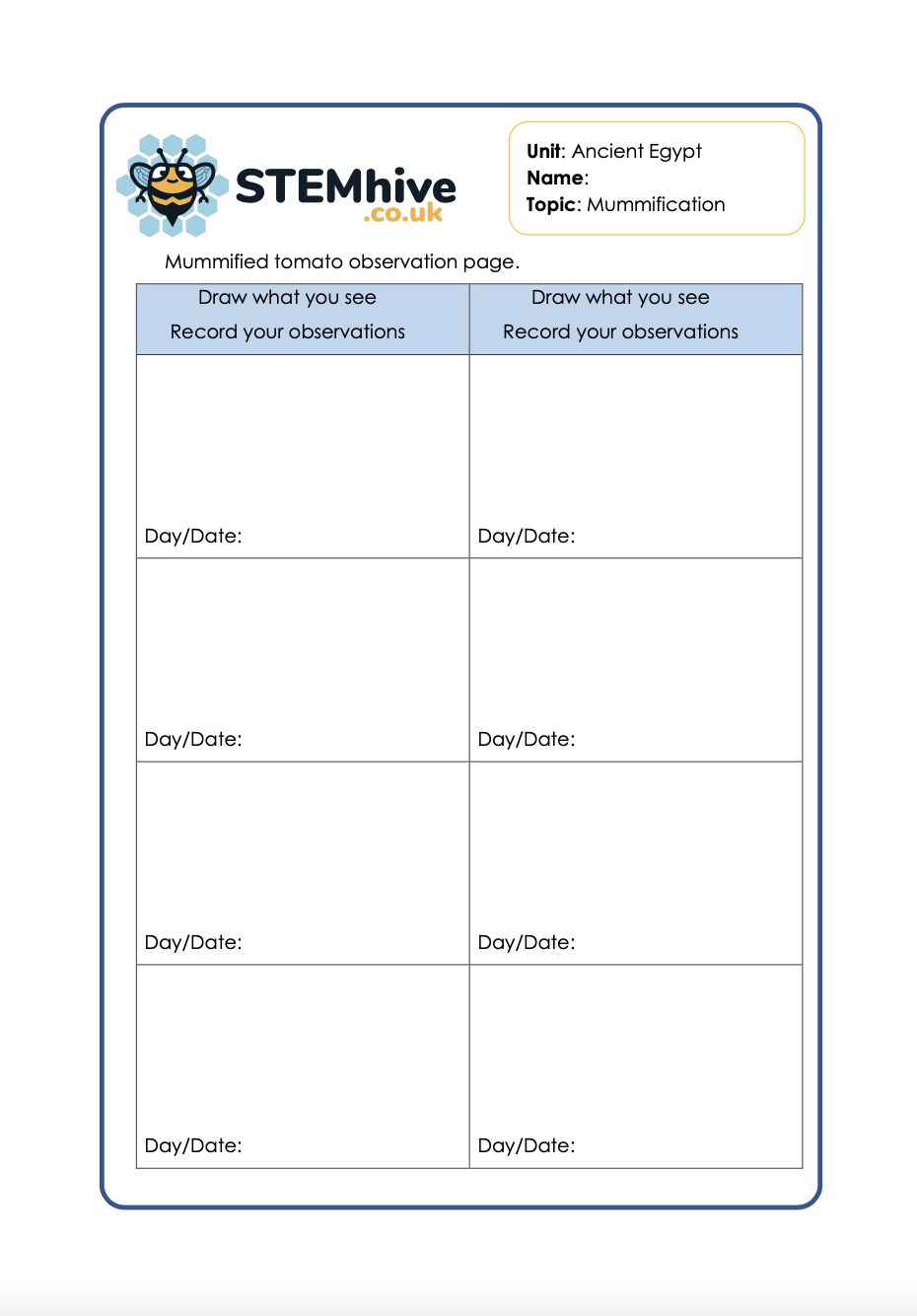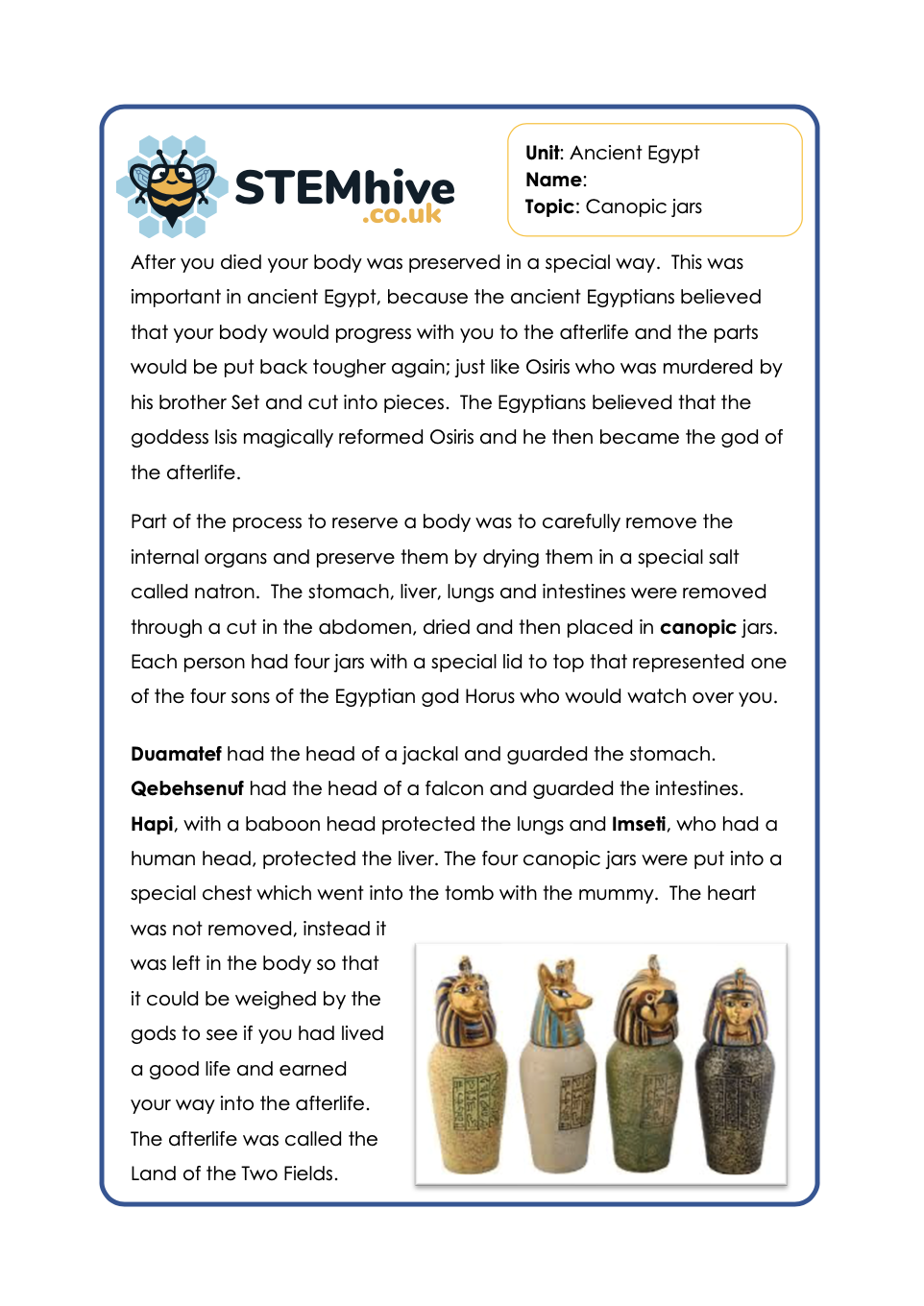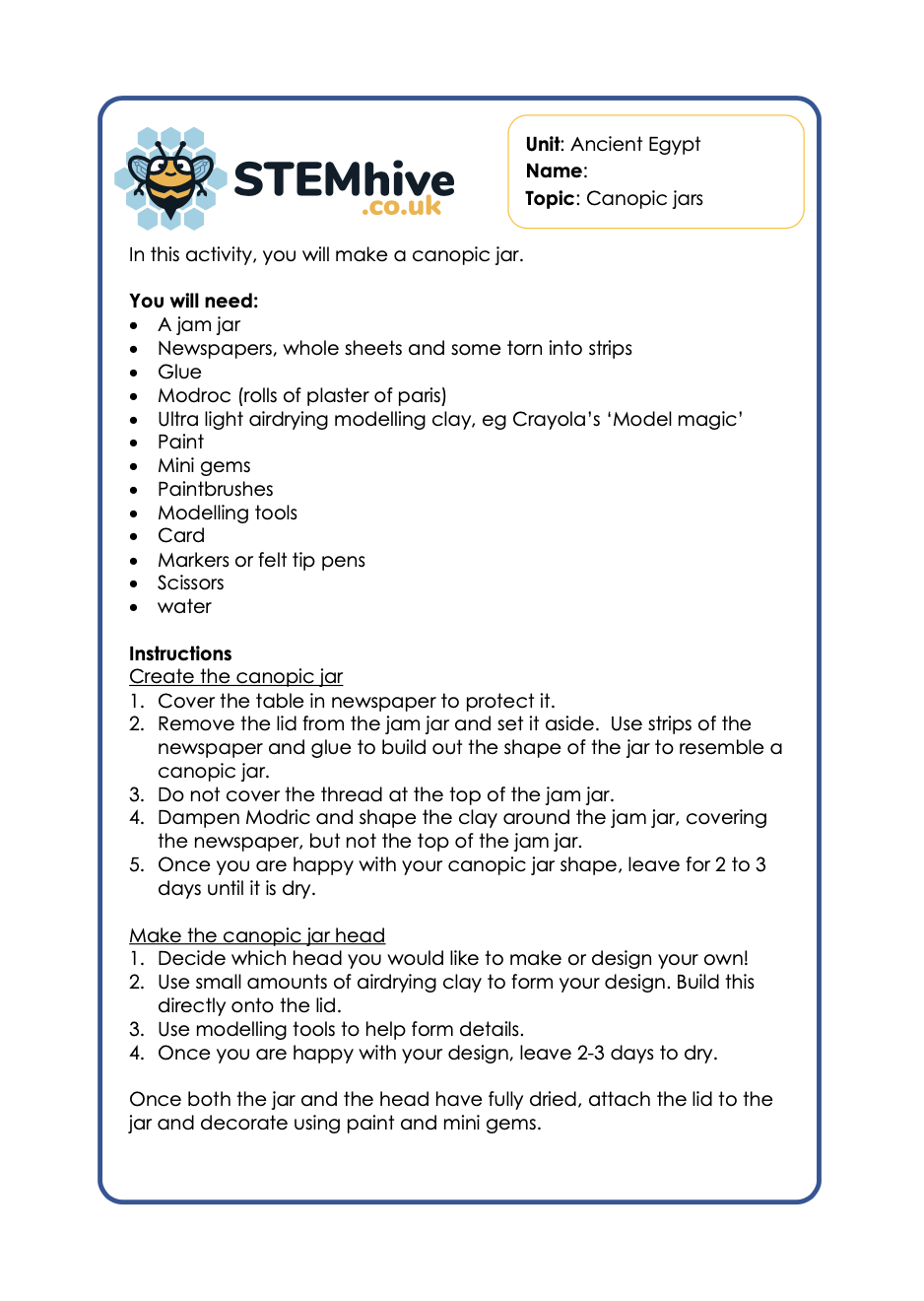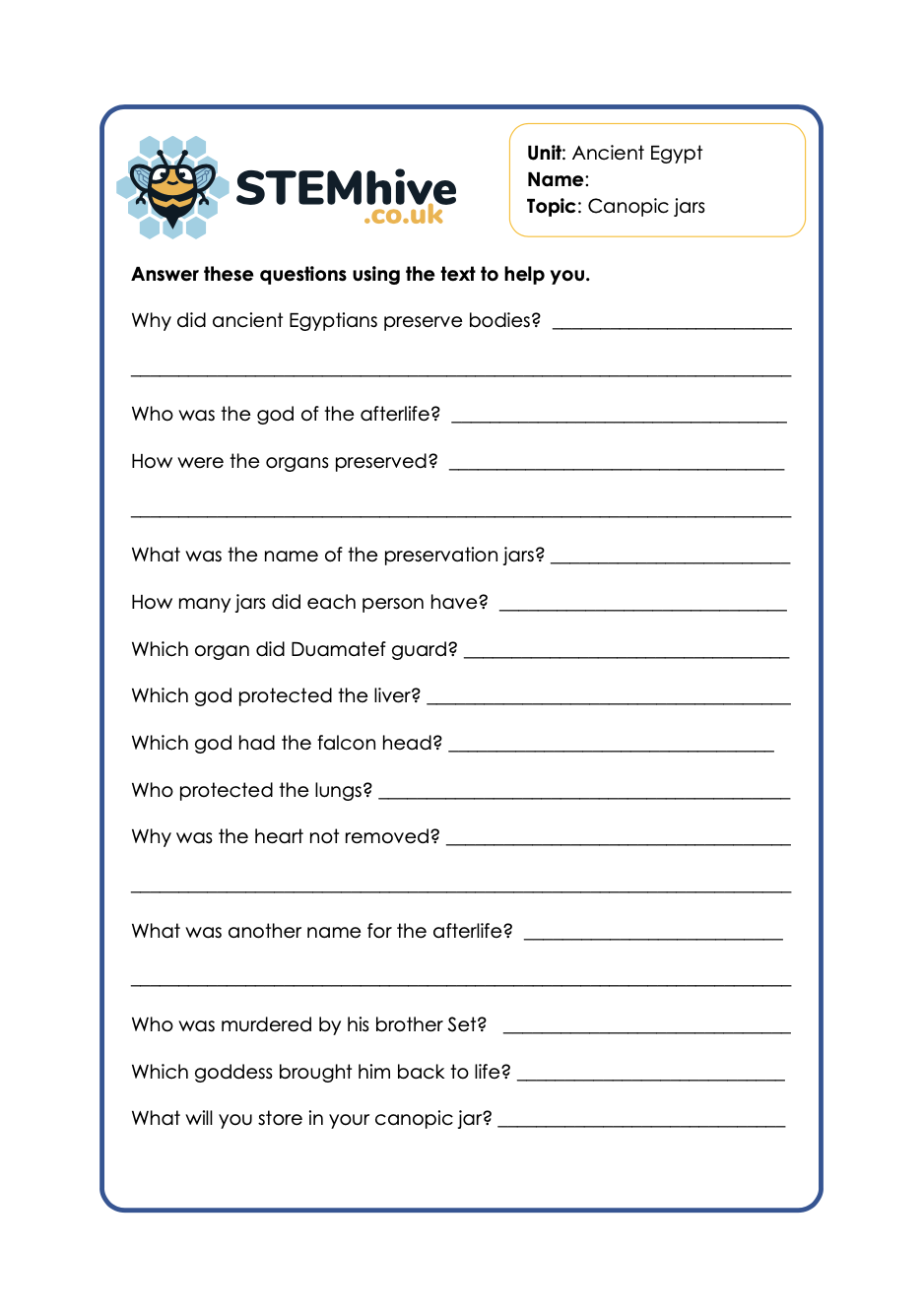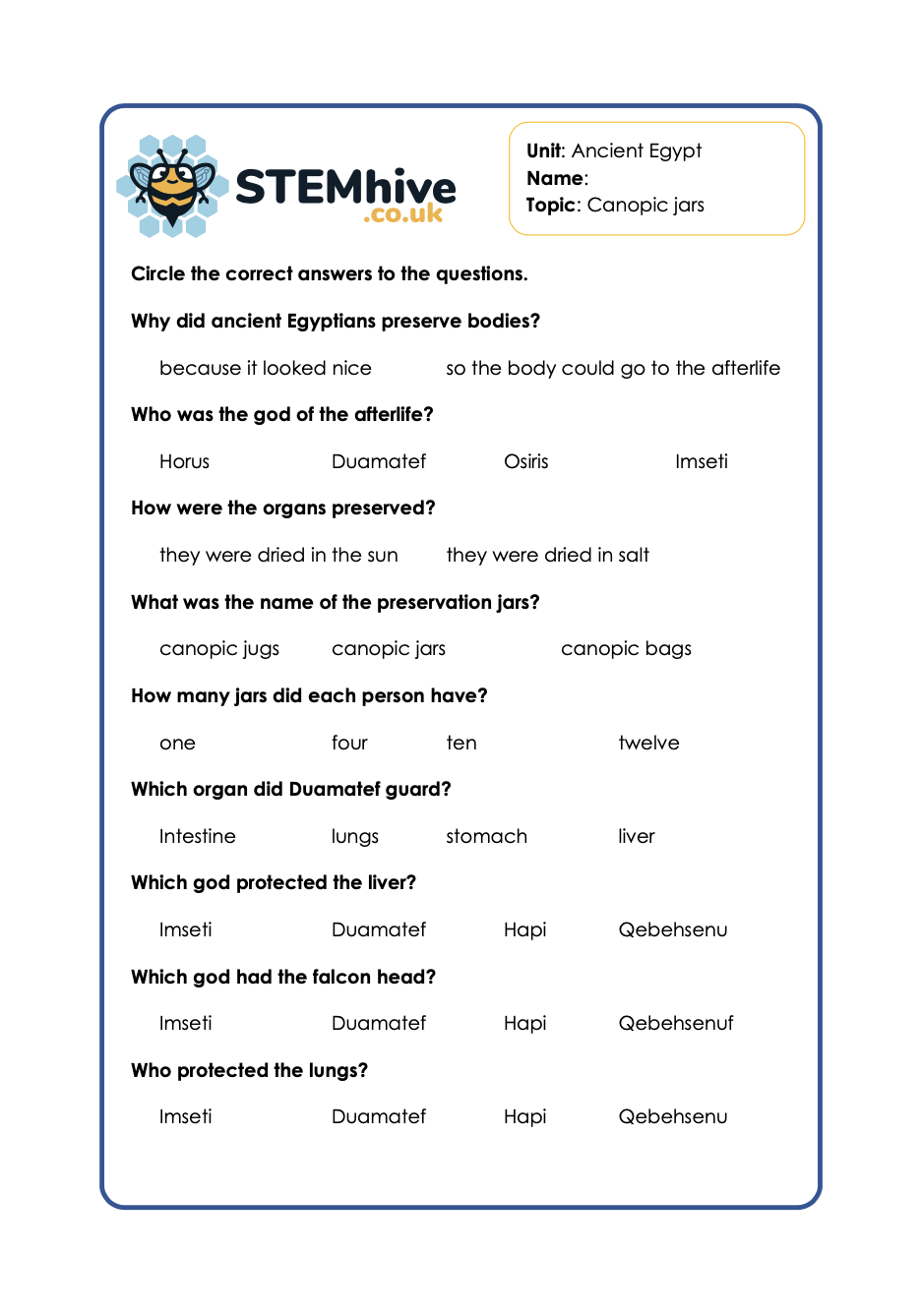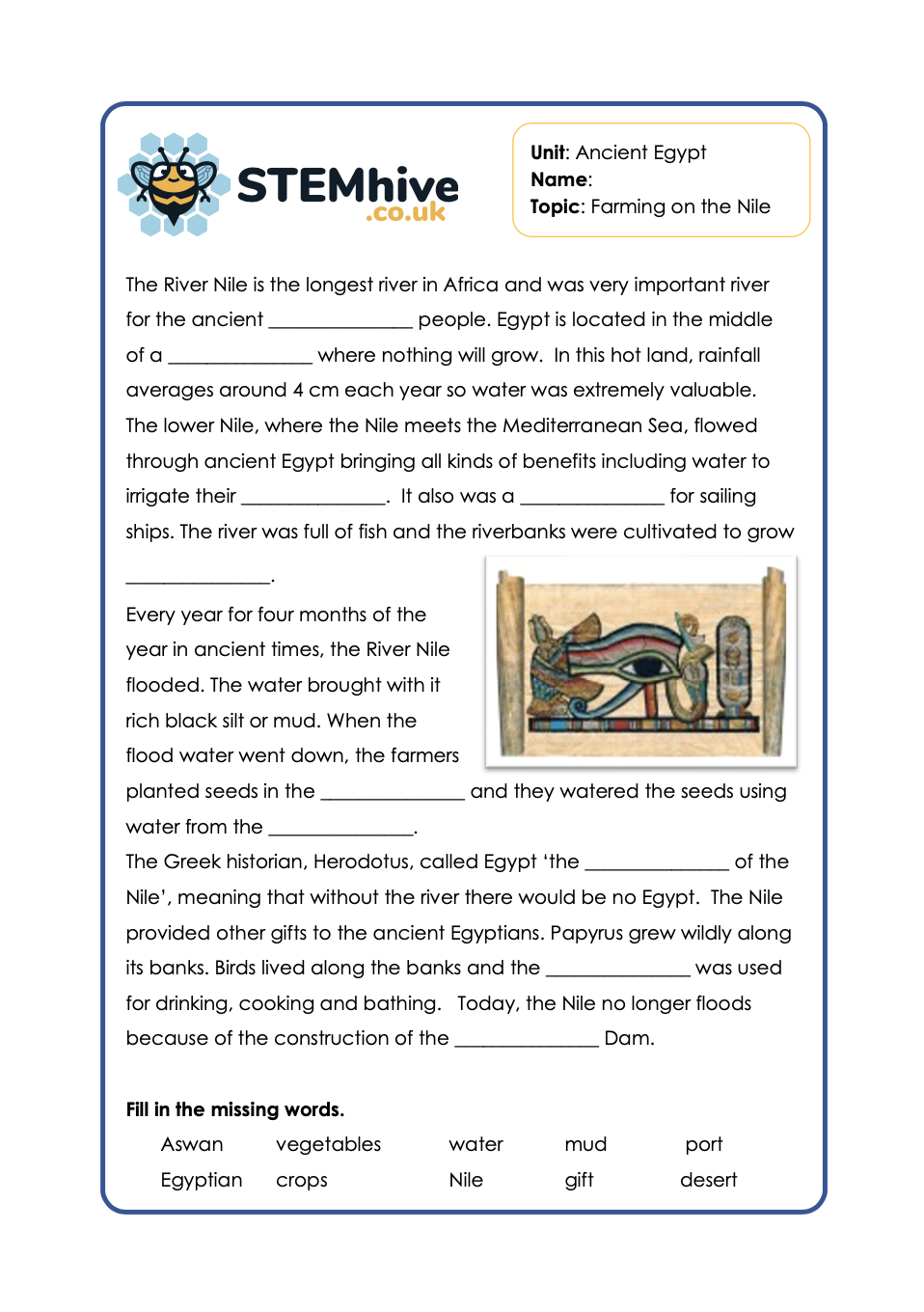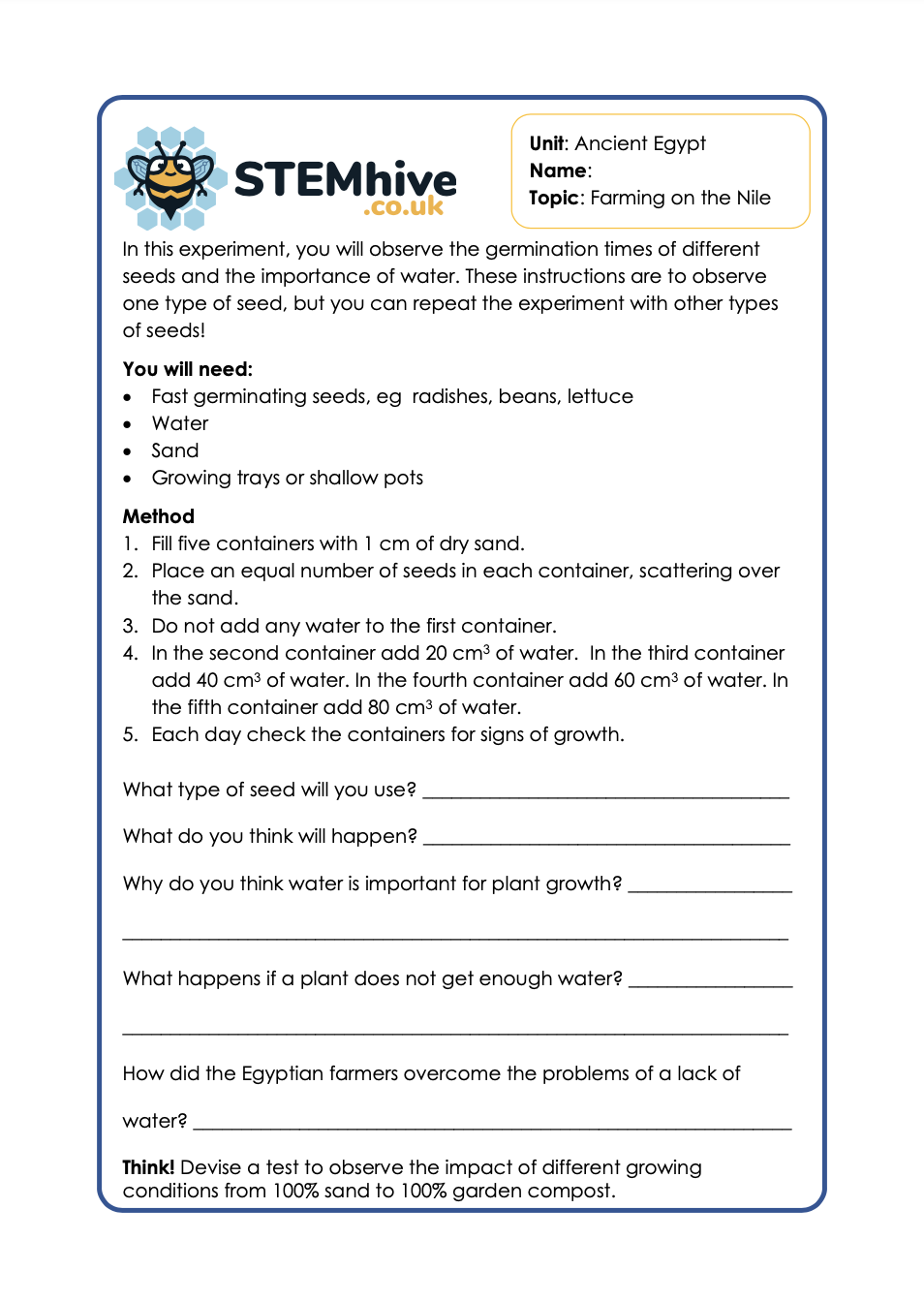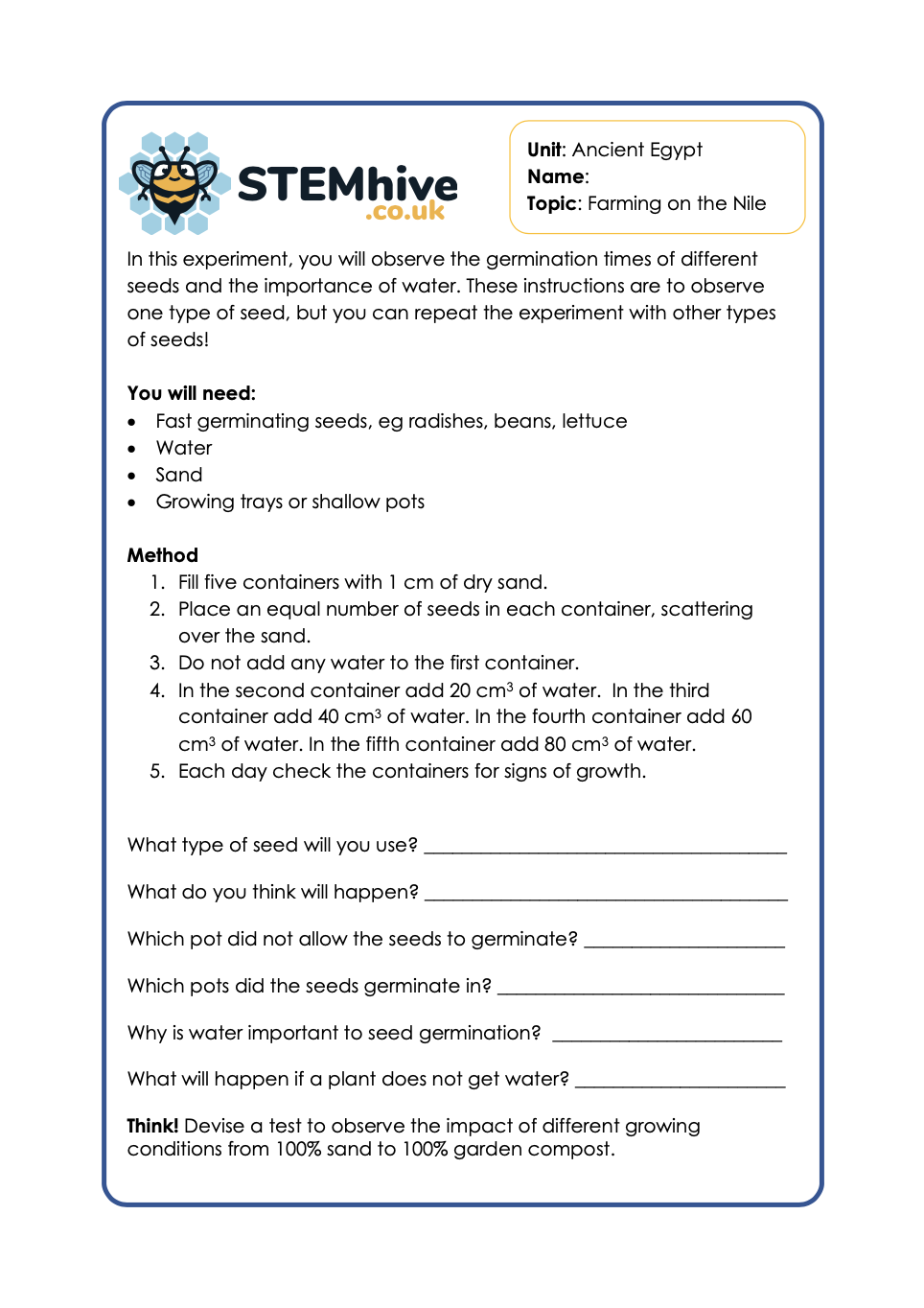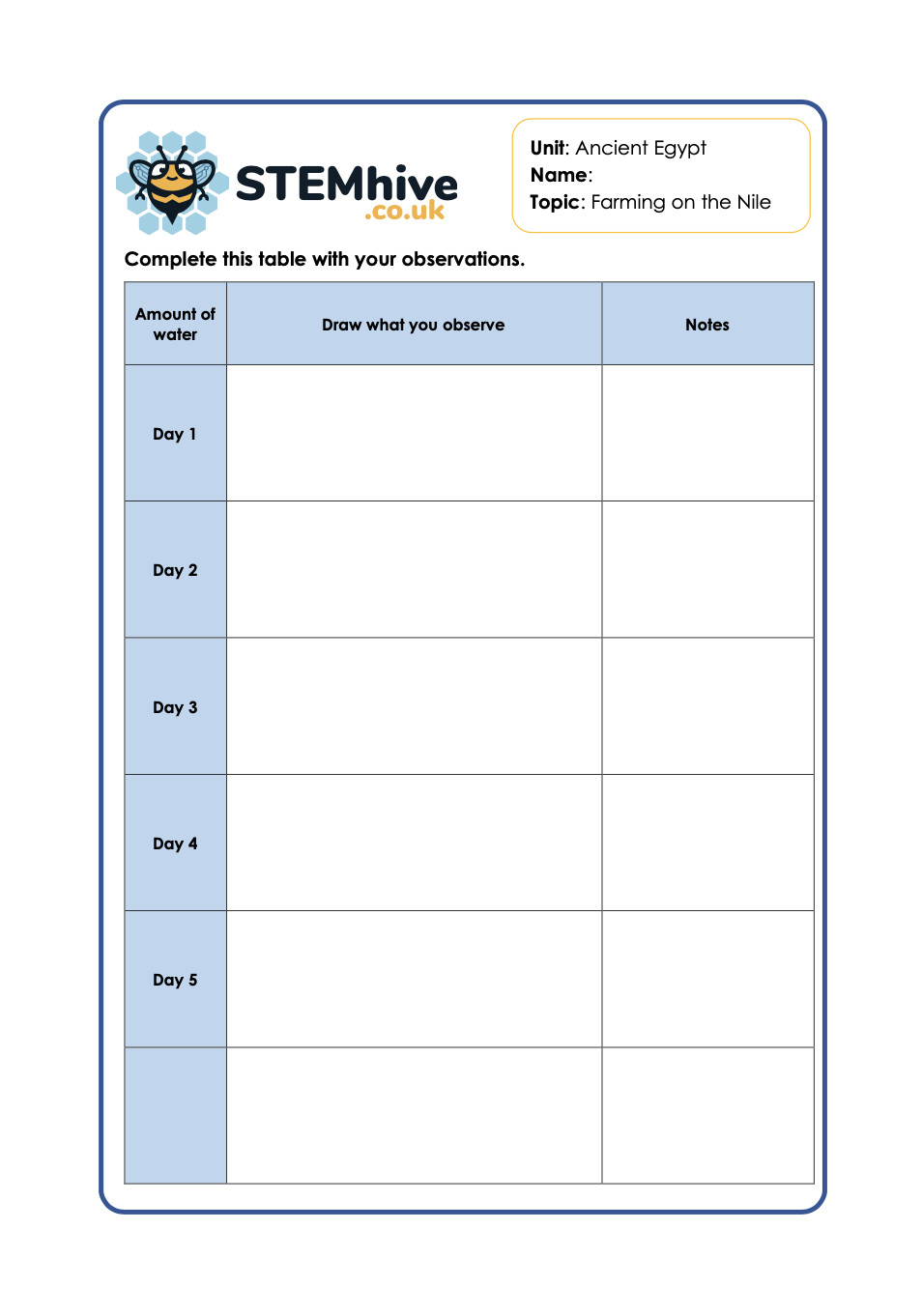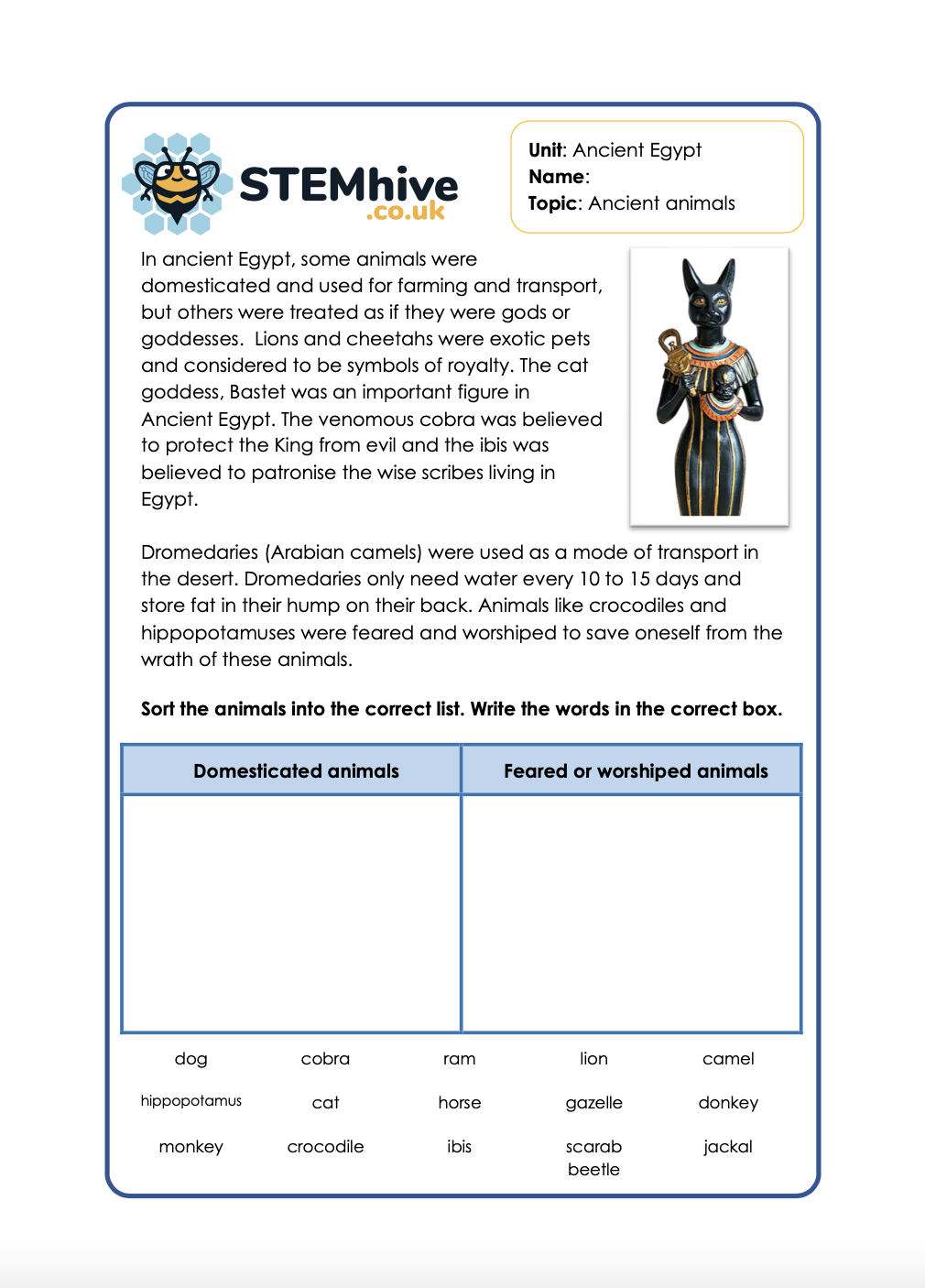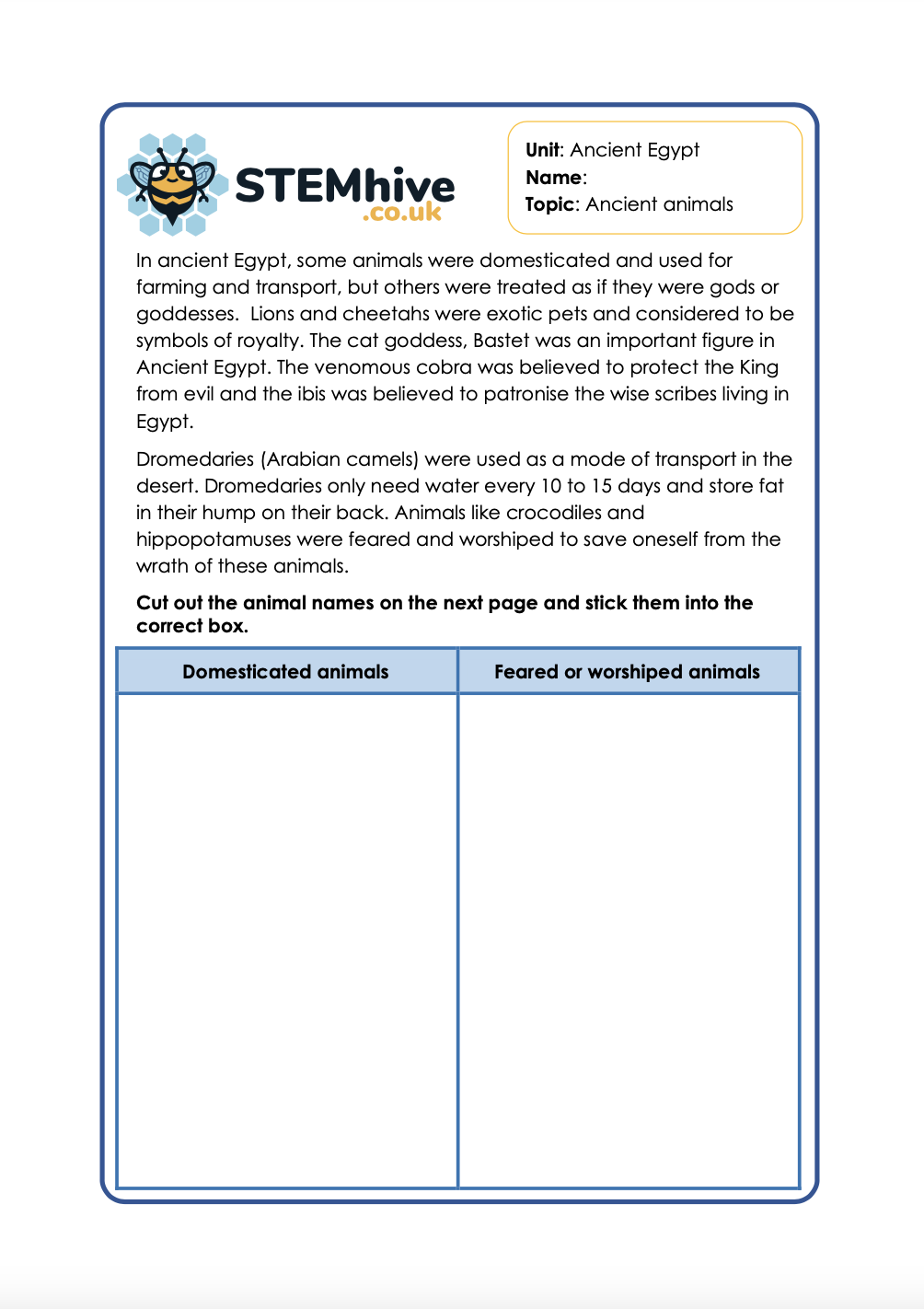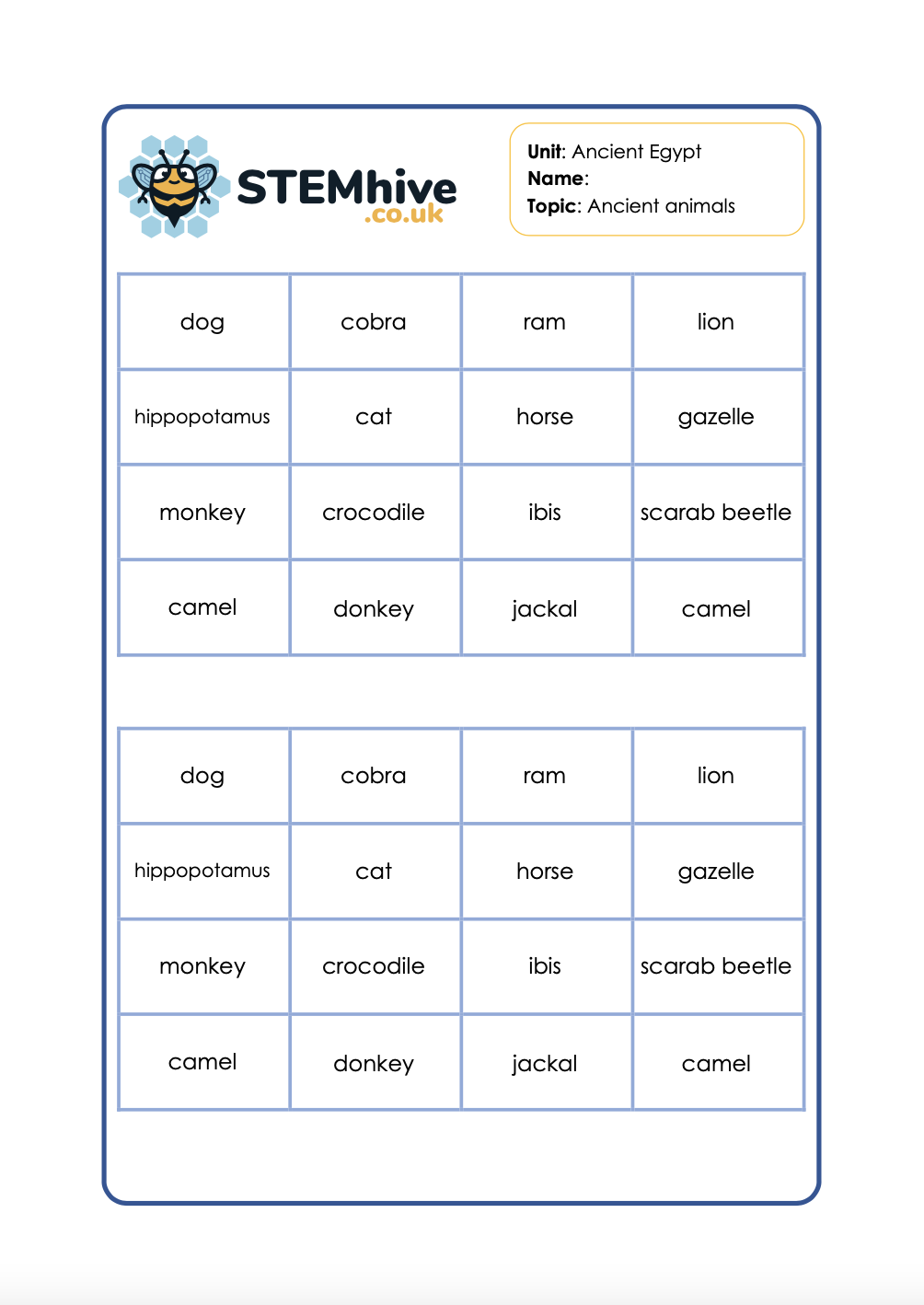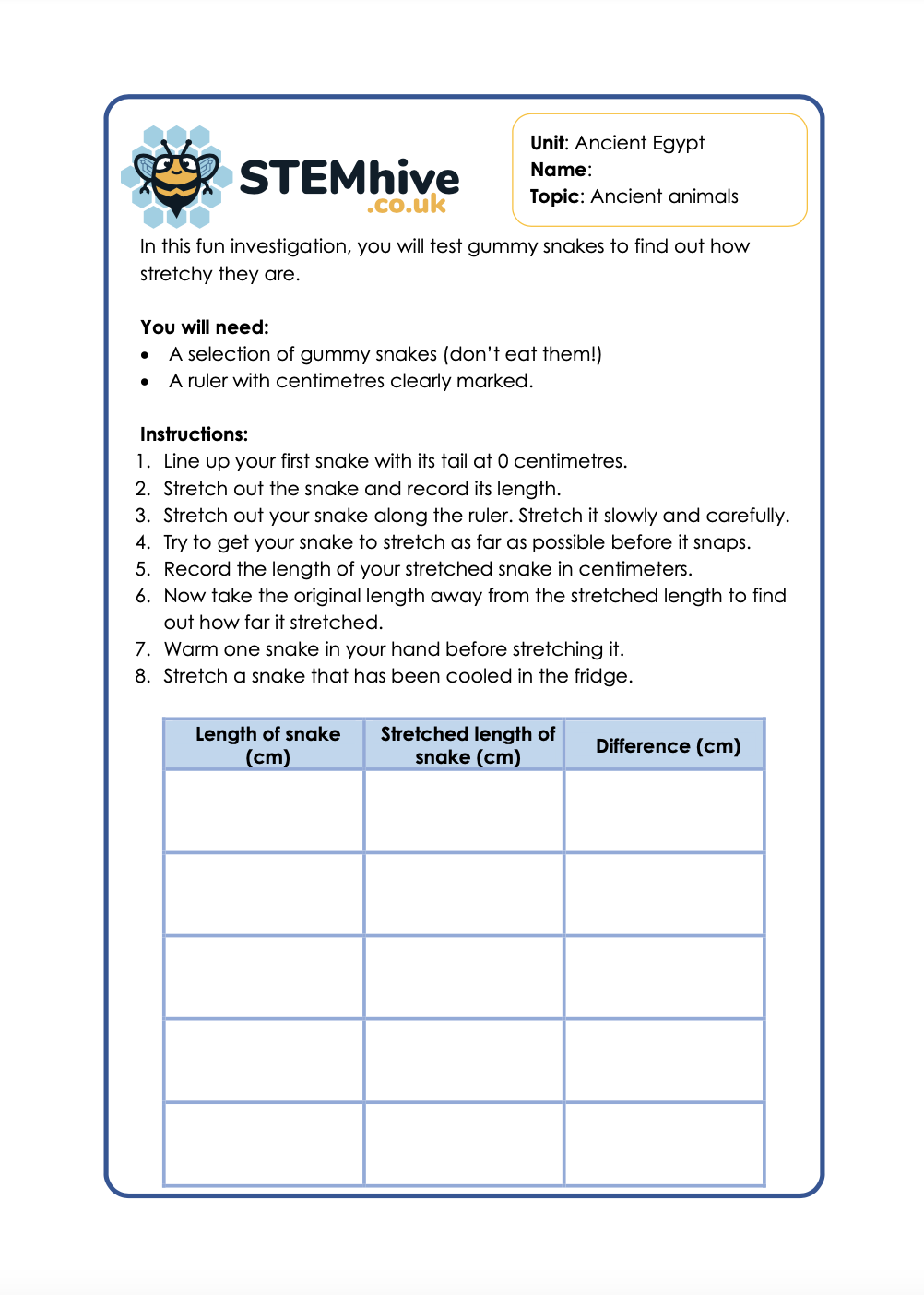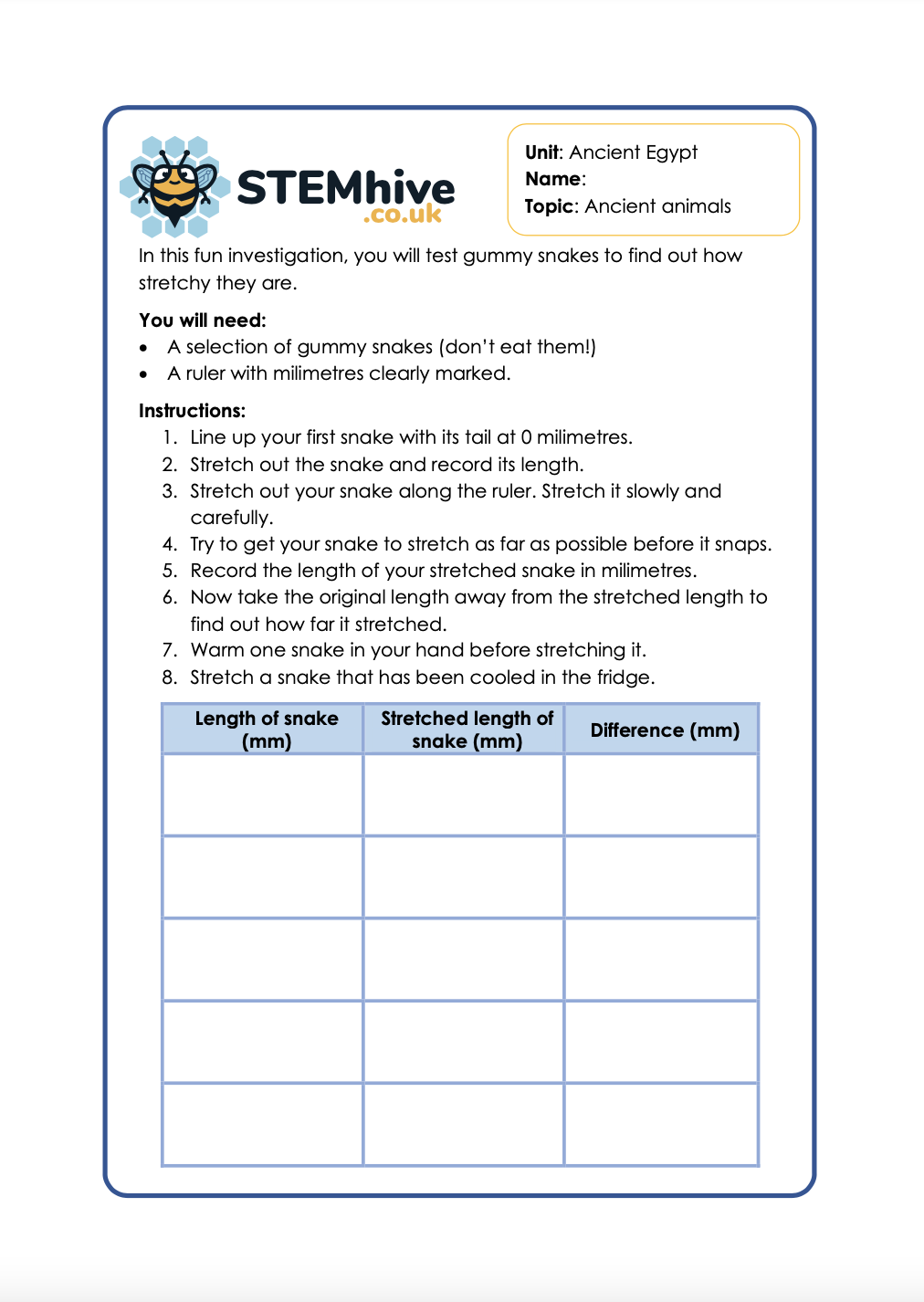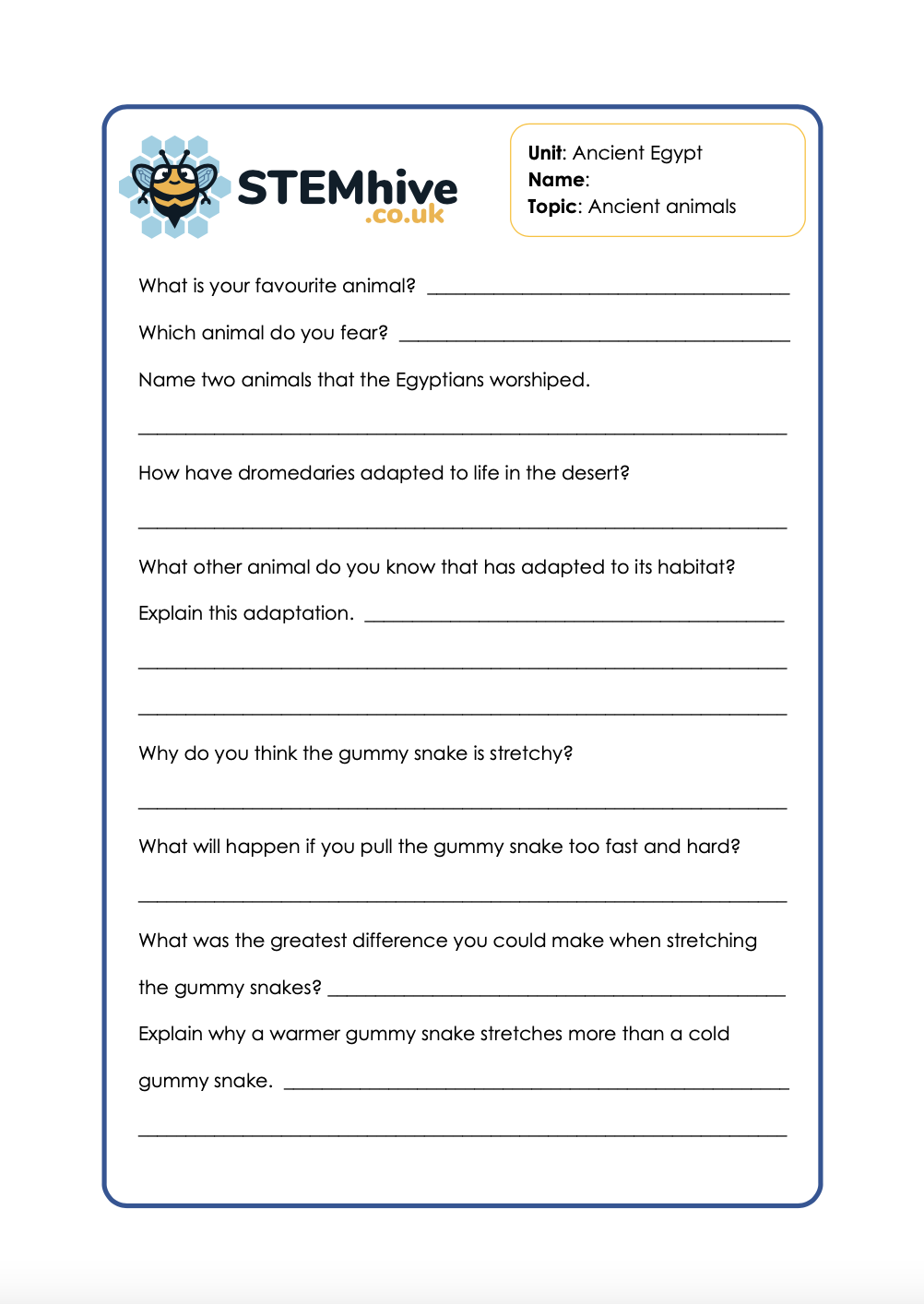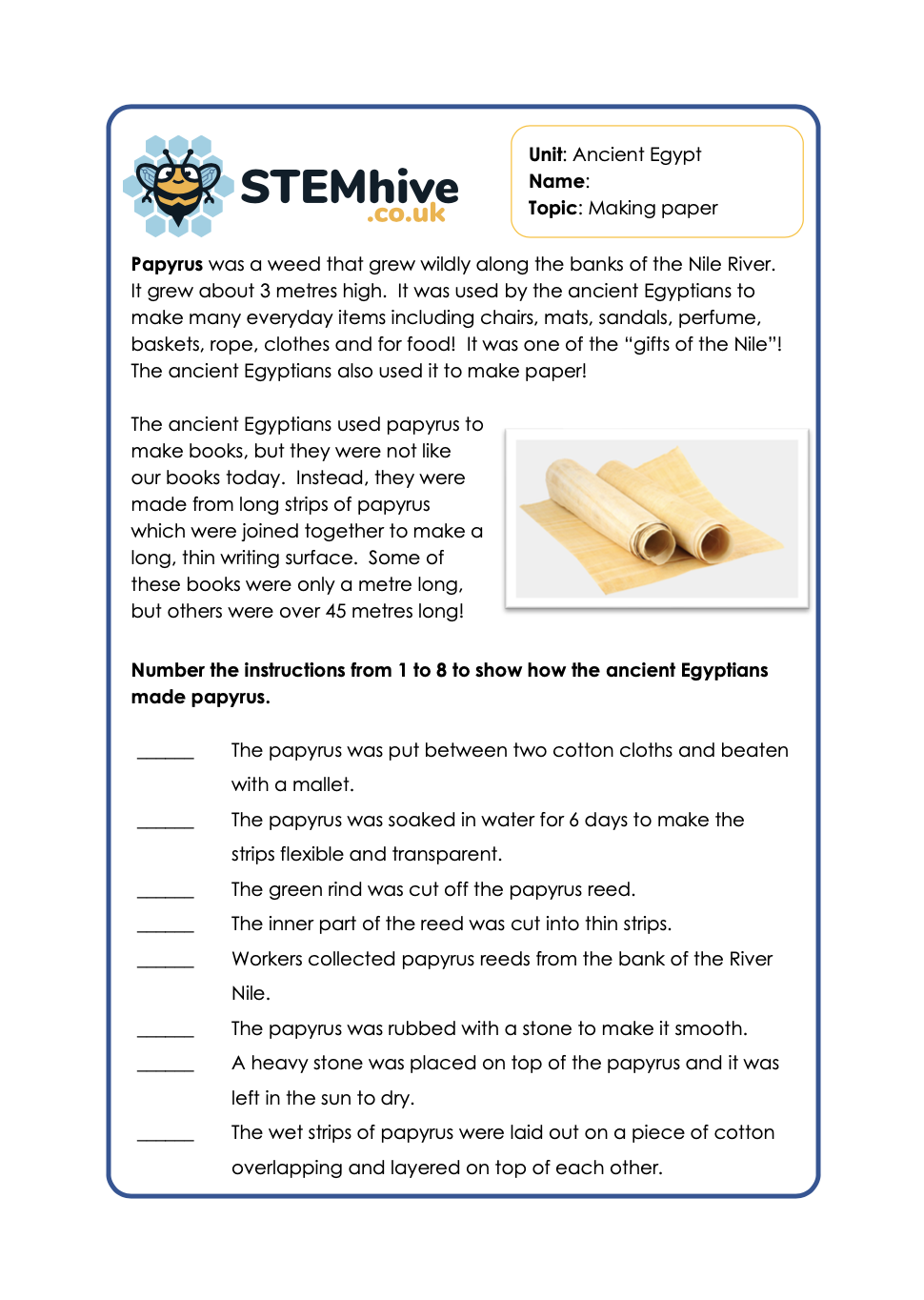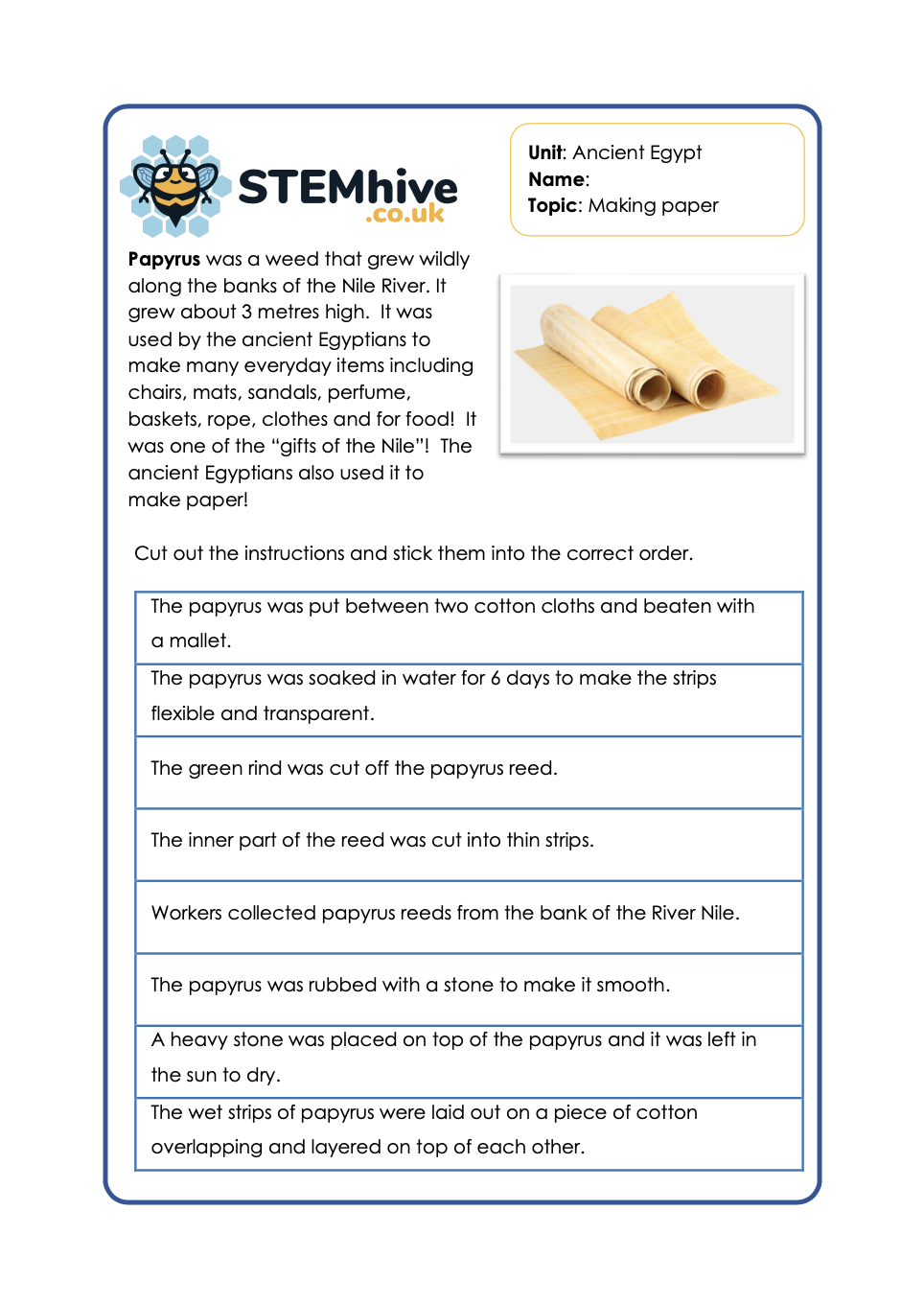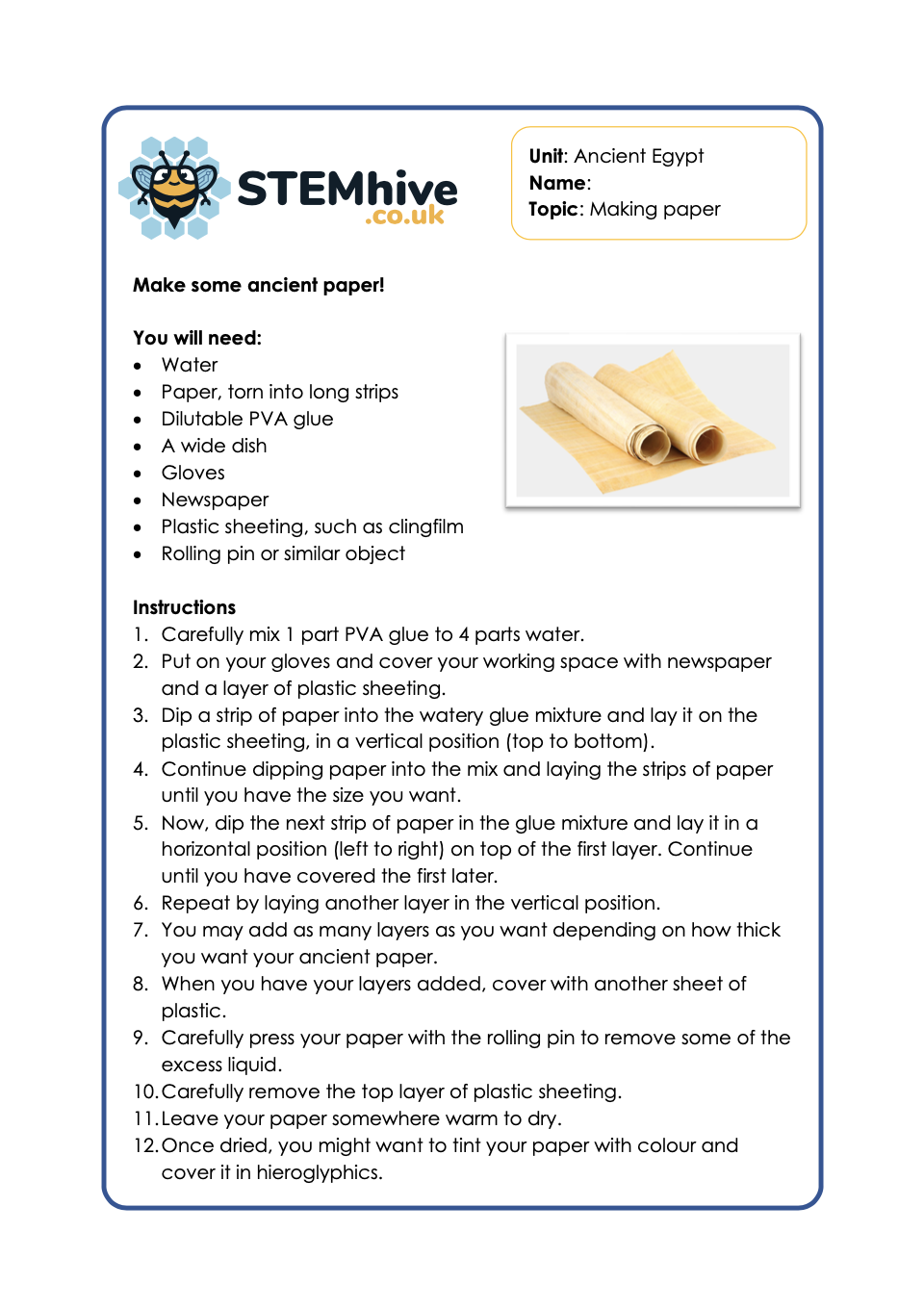Ancient Egypt
Main Focus: Ancient Foods
This is a great resource to give your class an understanding of the food consumed by the people of Ancient Egypt. It also shows how the locality shapes eating habits, giving your class a deeper understanding of why people ate the food they did.
People in ancient Egypt
ate and drank a wide
range of foods. They
were able to do so
because the Nile valley
was very fertile. Most of
the valley was used for
growing food rather than
grazing animals. As a
result, only the rich were
able to eat meat from
grazing animals regularly. Ordinary people were able to eat birds but despite living along the Nile, there is little evidence that they ate fish.
Main Focus: Building a Pyramid
This resource focuses on the construction of the pyramids and the theories of how these magnificent structure were built. This resource explores some of the ideas and focuses on pulleys and forces.
Ancient Egyptians are remembered for the construction of the pyramids over 4500 years ago. In many ways it is still a mystery as to how these pyramids were constructed as no building plans have ever been discovered. We do know that the pyramids are some of the most magnificent manmade structures created in history.
Main Focus: Jewellery
The ancient Egyptians wore jewellery for adornment, to show their social status and also for protection. Ancient Egyptians wore rings, earrings, necklaces, crowns, bracelets, pectorals, girdles and amulets.
Each piece of jewellery held significance for the people.
In this activity, your class will learn valuable information about ancient Egyptian jewellery, answer questions, recognise different types of jewellery and then make an Egyptian bead collar by following the instructions.
Unlock ResourceMain Focus: Mummification
During the process of mumification, ancient Egyptians removed different organs such as the liver, intestines, lungs and stomach from the body. They put these organs into Canopic jars and preserved them with natron salt. The jars were kept beside the mummified body to keep the organs safe for the afterlife.
Your class will cut out the sentences that show the sequence of mummification and place them in the correct order.
After that, your class will investigate how well different mixtures preserve and decide which is the best mixture for preserving a body.
For this science experiment they will need:
- 5 equal sized pieces of apple
- Salt
- Bicarbonate of soda
- Vinegar
- Sugar
- 5 canopic jars (containers with lids for your experiments)
- Spoons
- Labels for each canopic jar
Main Focus: Creating Canopic Jars
Main Focus: The Nile and Farming
This is an activity that encourages your class to complete the passages by adding in the correct words to learn more about the River Nile and how it was key to life in Ancient Egypt.
In this experiment, your class will observe the germination times of different seeds and the importance of water. These instructions are to observe one type of seed, but you can repeat the experiment with other types of seeds!
Unlock ResourceMain Focus: Ancient Animals
In ancient Egypt, some animals were domesticated and used for farming and transport, but others were treated as if they were gods or goddesses. Lions and cheetahs were exotic pets and considered to be symbols of royalty. The cat goddess, Bastet was an important figure in Ancient Egypt. The venomous cobra was believed to protect the King from evil and the ibis was believed to patronise the wise scribes living in Egypt.
In this fun investigation, you will test gummy snakes to find out how stretchy they are.
You will need:
- A selection of gummy snakes (don’t eat them!)
- A ruler with centimetres clearly marked.
Main Focus: Making Paper
In this STEM activity, your class will learn about Papyrus and they will number the instructions from 1 to 8 to show how the ancient Egyptians made papyrus.
Once that has been completed, they will have a go at creating their own ancient paper.
Papyrus was a weed that grew wildly along the banks of the Nile River. It grew about 3 metres high. It was used by the ancient Egyptians to make many everyday items including chairs, mats, sandals, perfume, baskets, rope, clothes and for food! It was one of the “gifts of the Nile”! The ancient Egyptians also used it to make paper!
Unlock Resource

